Another Friday, another article. Today we’re looking back at a very special game, Neverwinter Nights 2: Complete, as we approach the ten year anniversary of its original release. This is a collection of a PC exclusive pause-and-play RPG and its three expansions, developed by Obsidian Entertainment, except for the final expansion Mysteries of Westgate which was developed by Ossian Studios. Neverwinter Nights 2 was released in 2006, its first expansion Mask of the Betrayer in 2007, its second expansion Storm of Zehir in 2008, and the aforementioned Mysteries of Westgate in 2009. Neverwinter Nights 2: Complete is available on GOG.com for only $19.99, and it often goes on sale for half that. That’s quite the bargain for some of the highest quality RPGs out there with hundreds of hours of content even without mods.
In hindsight, this game seems too good to be true. This isn’t entirely because of our lowered standards, which are the result of industry standards lowering greatly since those times. Neverwinter Nights 2 was the culmination of traditional video game RPGs. Everything was building up to it. It features nearly every playable race, class, skill, and feat offered by prior D&D RPGs, and then many more on top of that. The amount of content offered by it and its predecessor, Neverwinter Nights, was staggering at the time of their release, and even more staggering by today’s standards. And that was just the base games, not even including the expansions which added more races, classes, prestige classes, feats/abilities, spells, and more. Neverwinter Nights 2: Complete features 12 races with 17 sub-races, over 300 spells, well over 300 feats, 40 different weapon types (not individual weapons but types like longsword, war axe, shortbow, etc.), 15 base classes, 24 prestige classes, and much more.
To put it in perspective, there is more variation, more ways to play Neverwinter Nights 2’s Wizard class, than most modern RPGs have in total classes/playstyles! And Wizard is just one of 15 base classes. It sounds like an exaggeration, but it is not, especially when you consider the possible prestige classes that a Wizard can become.
Furthermore, Neverwinter Nights 2: Complete isn’t just one game, it is a saga in itself. The base campaign is about 60 hours long, the first expansion 25 hours, second expansion 30 hours, and final expansion 20 hours. Custom campaigns created by modders exist as well, including unofficial remakes of legends like Baldur’s Gate and Icewind Dale, as well as adaptations of various highly praised pen and paper D&D modules such as The Temple of Elemental Evil, The Keep on the Borderlands, King’s Festival, and more. On that note, see our modding guide here.
 A list of campaigns, both unofficial and official, taken from the main menu. Not shown: many, many others!
A list of campaigns, both unofficial and official, taken from the main menu. Not shown: many, many others!All of these factors, along with the quality of its campaigns and its amount of possible role-playing (only rivaled by one game in the 2010s, that being Fallout: New Vegas) give just cause to claim that Neverwinter Nights 2 was the last great fantasy RPG, although anyone claiming this must have extremely high RPG standards in order to discredit Dragon Age: Origins.
So in this article we’re going to break down this gargantuan that is Neverwinter Nights 2, including all of its expansions. Yes, we’re going to review all of them, something we wish we had the opportunity to do. Although for what it’s worth, Neverwinter Nights 2: Mysteries of Westgate released about one month after GND-Tech was created. That was when we weren’t yet reviewing video games, and we weren’t even called GND-Tech yet!
Gameplay
Since we are essentially reviewing four games in one article, we are using a different layout this time around. Gameplay is first and foremost because Neverwinter Nights 2 and its expansions obviously share the same basic gameplay. There are some exceptions in each, but those are discussed on the pages for each individual campaign.
At its core, Neverwinter Nights 2 is a tactical stat-based pause-and-play RPG built upon Dungeons & Dragons 3.5 which is its foundation. Most things like attacks in combat (chance to hit), damage given, damage taken, almost everything is determined by a dice roll which happens in the background. Combat is partially turn-based; not fully like the classic Fallout games or XCOM, but more on an individual basis. When characters are engaged in combat, turns are in play just like a tabletop RPG in which players take turn rolling dice. Here in Neverwinter Nights 2 the turn-based mechanic is much more seamless than a full fledge turn-based game, you have no controls over the turns and a turn only lasts mere seconds. It’s like Pillars of Eternity and the Star Wars: Knights of the Old Republic games but slightly slower, although it speeds up as you level up and gain more attacks per round.
Whereas other video game RPGs make up their own simplified stat/rule system, or take what they want from an existing one like D&D, Neverwinter Nights 2 is unique for taking the most from its pen and paper origins. It is like the developers just copied over D&D 3.5 into a video game, and omitted things that don’t fit well into a video game (although they also admitted some skills that would’ve been a nice inclusion).
By having a stat for so many different things, Neverwinter Nights 2 simulates more aspects than other games, making it seem far more realistic and far more logical than other video games. That’s the whole point of the original pen and paper Dungeons & Dragons after all; to role-play, to pretend to live a different life, so in order for it to believable it has to be realistic and account for many different things, hence the different attributes, saving throws, abundance of skills, and how they’re all tied together. Role-playing games are meant to simulate an actual life to some degree, and both Neverwinter Nights games go farther than any other video game.
Neverwinter Nights 2 essentially integrates a D&D 3.5 handbook into the game. Every single aspect of character creation, every feat, every skill, every spell, every innate ability, every race, every subrace, and much more have complete, detailed descriptions. So, despite its complexity, it is quite easy to grasp if you read.
Keep in mind that Neverwinter Nights 2 is one of few games with an almost perfectly balanced difficulty setting, one that doesn’t skew the stats/rules in anyone’s favor. That difficulty is called “Hardcore D&D Rules” and it’s highly encouraged to play only on this mode and disregard the others.
Neverwinter Nights 2 is one of few RPGs with both third-person and isometric camera options. In fact, the camera is completely and totally customizable. You can use third person at essentially whatever distance you want, isometric with any distance you want, and whatever camera controls you desire. You see, Neverwinter Nights 2 is a true PC game with an insane amount of customization made back during the days when PC games were designed to take advantage of mouse, keyboard, and higher IQ and attention span. You won’t find an RPG with this much customization and configuration anymore.
It is not an action game. WASD movement is supported but it’s like Dragon Age and Star Wars: Knights of the Old Republic, so A and D rotate both the character and the camera in an ideal configuration (it isn’t like this by default). The game relies heavily on mouse interaction, as it’s a point-and-click game like every pause-and-play and turn-based RPG. All object interaction is point-and-click, although movement can be either point-and-click or key bound. It uses the same engine as its predecessor, Neverwinter Nights, although with updates of course. However, at launch in 2006, it felt outdated. Both Star Wars: Knights of the Old Republic and Knights of the Old Republic II are older than Neverwinter Nights 2 and have more refined movement and animations, as well as a much better combat pace. Fluidity was never a specialty of Neverwinter Nights 2, but then again it is played in largely point-and-click fashion, and movement can be controlled entirely by mouse clicks, thus making fluidity less vital.
The fact that the game allows you to choose whatever camera styles you want, and bind them to a key to quickly switch between three presets, is a huge benefit. I personally explore in third person with WASD movement, which is identical to how the Dragon Age and Star Wars: Knights of the Old Republic games play. But in battles I play with point-and-click movement in a more isometric viewpoint, but not a static one like regular isometric RPGs; I move the camera around a ton to get better vantage points, and I move the camera in closer than what isometric-only RPGs allow. This is similar to how the “tactical camera” of Dragon Age: Inquisition functions, but more versatile. You can get a glimpse of Neverwinter Nights 2 combat in the videos posted throughout this article.
Here are some screenshots showing off its camera options and respective key bindings.
Here is a look at some various possible HUD configurations for the game. You can freely move around most HUD elements, and also show or hide them. Not shown are some HUD features I never use, like the vertical hotbars.
But Neverwinter Nights 2 gameplay isn’t just combat, which separates it from most mainstream RPGs today. It has 27 skills which are explained in detail below, but all of them are used prominently in gameplay. Sure, other RPGs have skills, such as The Elder Scrolls, but many of those skills, particularly all the combat ones (both melee and magic) aren’t skills in Neverwinter Nights 2, they are feats. The same applies to all of the Fallout games which have combat skills; Neverwinter Nights 2 separates its combat stats from the skills, so it has far more skills, thus making it the best example of skill-based gameplay in an RPG due to the variety and prominence of skills. It utilizes all of them constantly.
Not too long ago the developers of Neverwinter Nights 2, Obsidian Entertainment, released Pillars of Eternity which won Best RPG of 2015. Neverwinter Nights 2 would have won Best RPG of 2006 had GND-Tech been around then. Let’s look at this brief comparison between the two very similar RPGs and also 2014’s Dragon Age: Inquisition.
Does this tell the whole story? Not quite. Pillars of Eternity has more “race checks” as in more gameplay or even dialogue prompts unique to player race. The same for religion. Neverwinter Nights 2 and its expansions barely have any of these. But other than this, as an RPG not only does Neverwinter Nights 2 offer far more as a whole than Pillars of Eternity, so does Mask of the Betrayer which is 25 hours long, and so does Storm of Zehir which is similar in length to Mask of the Betrayer. Only a small handful of RPGs, and almost all of which are great classics, measure up to NWN 2 in role-playing capability.
But these screenshots do set the tone. Neverwinter Nights 2 and its expansions are quite simply the most feature packed video game RPGs. It starts with the stat system; it has the most thorough, complete integration of D&D rules (version 3.5 in this case). There is more to its stat system than any other video game RPG. We say “video game RPG” because pen and paper RPGs obviously have a lot more role-playing in every sense.
To break down these core functionalites of Neverwinter Nights 2, which of course apply to its expansions since the expansions are not standalone, we will use the character sheet which shows everything you need to know (but it does not show everything). This is simply easier than analyzing every step in the character creator, you can do that yourself when you play. But you should know that character creation as far as stats go is more in-depth in the Neverwinter Nights games than any other game. You can choose race, sub-race when applicable, class, sub-class when applicable, alignment (Lawful Good, Neutral Good, Chaotic Good, Lawful Neutral, Neutral, Chaotic Neutral, Lawful Evil, Neutral Evil, Chaotic Evil), deity, skills, feats, name, biography, and more. On that note, we will say that alignment isn’t used well enough in Neverwinter Nights 2 or any expansion. Only Planescape: Torment uses it properly of all D&D video games. Alignment in Neverwinter Nights 2 is affected by certain player choices, but not nearly enough. For example, a gamer I know played the original campaign as a Neutral Good character, but behaved mostly in a Chaotic Neutral and Chaotic Evil way, yet by the end of the game was still Neutral Good.
First thing is first, the portrait. Either it’s budget cuts or Obsidian believed Neverwinter Nights 2’s graphics were good enough for these default portraits to be used, because most other D&D RPGs instead let you choose your own portrait and each one was an artistic rendering instead of your actual character model. You can still change portrait during the game by double clicking it in the character sheet, but by default the only options are ones already used by other characters. Thankfully community made portrait packs exist.
Let’s start with the Attributes. Even today’s RPGs have those, but D&D’s attribute system is the standard and is widely considered to be the best and most natural. We are going to use spoiler tags for each attribute just to minimize the amount of necessary scrolling on this page, so there are no actual spoilers here. Attributes are your character’s core physical, mental, and personality attributes. They are the most fundamental stats, and all of the dozens of derived stats such as hit points (health), armor class, all 27 skills, chance to hit, damage resistances, and much more are derived from them.
- STR (Strength): Your physical strength. Affects damage of melee weapons, chance to hit for melee weapons, can give a bonus to ranged attack damage if the ranged weapon has the “Mighty” property. Sometimes used in dialogue and scripted gameplay prompts. Note that the “Weapon Finesse” feat makes the character use Dexterity instead of Strength for melee attack rolls (chance to hit) with smaller melee weapons. Also note that the “Combat Insight” epic feat makes the character use Intelligence for damage rolls instead of Strength.
- DEX (Dexterity): Agility, reflexes, balance. Affects ranged attack rolls, dodge Armor Class (AC), reflex saving throws, initiative rolls, and the following skills: Hide, Move Silently, Open Lock, Parry, Sleight of Hand, Tumble. Also used in some scripted gameplay prompts (in place of D&D’s Climb skill and the like). Dexterity also affects melee attack rolls for certain weapons when the “Weapon Finesse” feat is chosen as mentioned earlier, and it also determines bonus damage per round from the “Expose Weakness” feat/ability. Ranged attack rolls can also use Wisdom instead of Dexterity if the player chooses the “Zen Archery” feat and has higher Wisdom.
- CON (Constitution): Resilience, health. Affects the amount of hit points (health, abbreviated ‘HP’) you have, how many hit points you gain when leveling up, fortitude saving throws, Concrentration skill checks, and with the Steadfast Determination feat it can affect will saving throws instead of Wisdom only if your CON score is higher than your WIS score.
- INT (Intelligence): Logical thinking and reasoning, learning ability, problem solving. Affects the amount of skill points you get when leveling up, how much XP you receive, is often used in dialogue prompts, and affects spell DC for Wizards. It also affects the following skills: Appraise, all crafting skills, Disable Device, Lore, Search, Spellcraft. With the Combat Insight epic feat, Intelligence determines damage rolls. With Insightful Strike ability, Intelligence determines the damage bonus.
- WIS (Wisdom): Willpower, intuition, common sense, perception. Affects will saving throws, many Monk abilities, spell DC for: Clerics, Druids, Favored Souls, Paladins, and Rangers. It also affects the following skills: Heal, Listen, Spot, Survival.
- CHA (Charisma): Personality, leadership, charm, wit, physical attractiveness. Affects spell DC for Bards, Sorcerers, Spirit Shamans, and Warlocks. Also affects many Paladin/Cleric/Favored Soul/Blackguard abilities as well as the following skills: Bluff, Diplomacy, Intimidate, Perform, Use Magic Device.
In addition to the score of each of these attributes, there is a modifier, like +1 or -2. These are directly tied to the score. A score of 10-11 has a modifier of 0, and every 2 points in either direction adds or subtracks a value of 1 to the modifier. So a score of 12-13 has a +1 modifier, a score of 8-9 has a -1 modifier, a score of 14-15 has a +2 modifier.
Below the attributes other vital functions are listed, and those are Saving Throws. A saving throw is a dice roll thrown to avoid or partially avoid some kind of damage or harm. The value for saving throws increases when leveling up depending on your class; some classes improve certain saving throws more than others. Equipment and spells can also affect saving throws.
- Fortitude Saving Throws: Used to avoid or endure physical harm. Relies on your Constitution modifier.
- Reflex Saving Throws: Typically used to avoid things like traps, in which your reflexes allow you to move out of harm’s way either fully or partially (traps have multiple reflex saving throws; one can avoid all damage, one afterwards can just avoid some). Relies on Dexterity modifier.
- Will Saving Throws: Used to resist mental influence. Mind-affecting spells for example (Enchantment school) will go against your will saving throw. Relies on Wisdom modifier.
Looking over to the right side of that character sheet image, we see two small numerical values listed near the top, in this case 170/170 next to a blue plus icon, and 35 next to an icon of a cuirass. As expected, the blue plus and assigned value represents the character’s Hit Points (HP) while the other icon/value represents Armor Class (AC). HP is the character’s health; he/she dies when it hits zero, although all of the campaigns except for Storm of Zehir revive downed party members automatically after battle.
Armor class functions in a rather strange way in D&D 3.5 and thus Neverwinter Nights 2. A higher value is indeed better as it means you can avoid more damage through various means. There are many different kinds of AC, but they all add up to give the displayed value (in this case 35). The different kinds of AC are:
- Armor: This refers to AC given by armor, so it refers to armor blocking damage.
- Natural Armor: This refers to AC given by things like your own skin or exoskeletons when applicable. Several spells provide a Natural Armor AC increase, like Barkskin.
- Shield: This is given by shields, so it refers to shields blocking damage.
- Deflection: This refers to deflecting damage. This is given by certain armor pieces, often enchanted. Some spells may also provide a deflection AC bonus.
- Dodge: This refers to dodging an attack entirely. Also given by rarer armor pieces.
Furthermore, your Dexterity modifier directly affects AC, and so does the size of the character (humans, gnomes, and Genasi all have different sizes for example).
Below HP and AC you can see the race and classes listed. Below this are your damage output, Attack Bonus, and Base Attack Bonus (BAB). Higher Attack Bonus, which is dependent on your BAB, means you have a higher chance of striking your opponent, and lower means you have a higher chance of missing.
Neverwinter Nights 2 has more status effects than most smaller scale strategy games like XCOM and Dawn of War. Here is a list of them below.
- Asleep
- Blinded
- Charmed
- Concealed
- Confused
- Damage Resistance (percentage) for every individual kind of damage
- Damage Reduction for various types of damage, with different ways to bypass it such as different levels of weapon enchantments required, certain weapon material, magic, etc
- Dazed
- Deafened
- Diseased
- Dominated
- Entangled
- Frightened
- Hasted
- Immunities to some of these effects and spells
- Invisible
- Paralyzed
- Poisoned
- Knocked down
- Regenerating
- Silenced
- Slowed
- Spell Failure
- Spell Resistance
- Stunned
- Temporary HP
Playable races in Neverwinter Nights 2: Complete include:
- Human
- Dwarf: Sub-races include Shield Dwarf, Duergar (Gray Dwarf), and Shield Dwarf.
- Elf: Sub-races include Moon Elf, Sun Elf, Wood Elf, Wild Elf, and Drow.
- Half-Elf: Half Human, half Elven. Sub-races include Half-Drow.
- Gray Orc
- Half-Orc: Half Human, half Orc.
- Gnome: Sub-races include Rock Gnome and Deep Gnome.
- Halfling: Sub-races include Lightfoot Halfling and Strongfoot Halfling.
- Genasi: Planetouched race. Sub-races include Air Genasi, Earth Genasi, Fire Genasi, and Water Genasi.
- Aasimar: Planetouched race.
- Tiefling: Planetouched race.
- Yuan-Ti Pureblood: Snake people.
Each and every race and sub-race has distinct stats, abilities, pros, and cons. There is only one sub-race not available in this game that is available in another D&D video game, and that’s Ghostwise Halfling. However this sub-race is partially implemented and can easily be added to the game with very simple tweaks.
Similarly, the amount of creatures in NWN 2 in general numbers in the hundreds; several times more than almost any other RPG. I believe the only one that tops it is the first game.
The following Classes and Prestige Classes are available in Neverwinter Nights 2: Complete:
Classes
- Barbarian – High BAB, high melee damage, somewhat reckless. Needs high STR and CON, decent DEX and INT. Has a Prestige Class designed specifically for it, Frenzied Berserker.
- Bard – Defined by song and storytelling, wanderers. Needs high CHA above all. Medium BAB. Utilizes songs in combat, largely (but not exclusively) meant for buffing party members. Very versatile with many Prestige Class options.
- Cleric – Priests, divine spellcasters with potential for good melee capability too. Needs very high WIS, decent STR and CON, and decent CHA (low Reflex saves and high Fortitude saves means do not make a Dexterity focused build). Medium BAB. Evil Clerics can become Blackguards. Clerics serving Kelemvor should become Doomguides. Others may become Warpriests or Divine Champions.
- Druid – Nature worshippers, potentially shapeshifters. Divine spellcasters with potential for good melee capability too, as they have medium BAB. Needs high WIS, the rest is up to you. Since Druids have high Fortitude saves and low Reflex saves, Druids with melee weapon focus should tank (high STR and CON) instead of focusing on DEX and lighter weapons, but of course melee will always be secondary for Druids. Those who focus on shapeshifting should not take any Prestige Class. Shapeshifting was superior in the original Neverwinter Nights but it’s still awesome in Neverwinter Nights 2.
- Favored Soul – Like Clerics but automatically memorize spells like Sorcerers, so no spellbook. They also don’t get to choose a domain like Clerics do. Medium BAB.
- Fighter – Warriors of any kind. High BAB. The most important attributes are the ones related to whatever type of weapon you choose (STR and CON for melee tank build, DEX and STR for ranged builds) but don’t forget that INT is important too, and can lead to unique and super effective abilities.
- Monk – Spiritual but combat focused, especially unarmed. Medium BAB. High WIS is a necessity, STR and DEX are also important. Many Prestige Class options especially if you end up going ex-Monk. Monks have high saving throws for all three types of saving throws.
- Paladin – Holy warriors so to speak. High BAB. They are more combat oriented Clerics, so very limited divine spellcasting but are far more effective in melee combat. High STR and CON are necessary, and CHA and WIS are important too. Divine Champion is pretty much made for Paladin, although evil Paladins may want to choose Blackguard.
- Ranger – Survivalists, hunters, very limited divine spellcasters but deadly in combat thanks to high BAB. WIS is important as is DEX, everything else depends on your build. Great base class for Arcane Archer builds.
- Rogue – Sneaky, deceptive, often thieves or sometimes assassins. Medium BAB. High DEX and INT are necessary. Tons of Prestige Class options.
- Sorcerer – Naturally gifted arcane spellcasters who don’t need spellbooks and memorization. They cast spells through innate power. CHA is most important. Low BAB, not meant for melee combat although spells can greatly assist with this, especially Transmutation spells.
- Spirit Shaman – Divine spellcasters who have an affinity for spirits. High WIS is absolutely necessary as is high CHA, as surprisingly CHA is used for spell DC. Medium BAB.
- Swashbuckler – Charming and daring, and also deadly in combat thanks to high BAB. High DEX and CHA are necessary and I’d favor INT over STR, leading to Combat Insight when applicable (but this doesn’t become an option until level 20 so don’t ignore STR). Duelist is basically made for this class.
- Warlock – Powerful innate spellcasters with totally different spellcasting properties than every other class, including limitless casting! Their spellcasting and combat revolves around their Eldritch Blast ability which grows in power as you level up. It is a ranged touch attack, so all Warlocks should have the Weapon Focus: Ranged Touch Attack feat. This is basically an unlimited spell, and many Warlock spells (called invocations) can combine with your Eldritch Blast, modifying its properties (such as adding a chance to Daze opponents, changing the area of effect from a single target to an area or a cone, or changing the damage to acid damage which is not subject to spell resistance like the regular Eldritch Blast damage is). CHA is most important. Warlocks can serve well in melee combat thanks to medium BAB and especially thanks to some of the Warlock spells available (they have a spell that gives +4 DEX and increase Tumble skill), although because of their limited selection of feats, it is not suggested to focus on any melee weapon as a Warlock, instead taking Weapon Focus – Ranged Touch Attack. There is a Prestige Class specifically for evil Warlocks, called Hellfire Warlock.
- Wizard – Classic D&D arcane spellcaster, relying on books and memorization. INT is of utmost importance. Low BAB.
Every single one of these classes has unique abilities and thus bring substantially different gameplay. So that’s 15 base classes, now for the prestige classes:
Prestige Classes
- Arcane Archer – An archer who utilizes arcane magic to bolster his or her… archery. High BAB. Arcane Archer feats/abilities are centered around archery, what else? Includes some really cool magic enhanced archery feats/abilities. There are many ways to build an Arcane Archer although high DEX is an obvious necessity. The one I made had one level in Wizard, all ten levels in Arcane Archer when availble, and by the end of Mask of the Betrayer 19 levels in Ranger. Ranger was the starting class. This made for an absolutely devastating build as both Arcane Archer and Ranger have high BAB, not to mention bow and arrow is a great weapon choice for Rangers (my favorite).
- Arcane Scholar of Candlekeep – Metamagic specialists, no magic school restrictions. Low BAB. Features many unique metamagic feats that are very powerful.
- Arcane Trickster – Essentially a Rogue who also uses arcane magic. Low BAB. The most logical Arcane Trickster build combines Rogue and Wizard, which will meet the requirements for Arcane Trickster while only needing to focus strongly on two attributes; DEX and INT. This way you can get insanely high DEX and INT. Illusion magic is best suited for Arcane Tricksters although Enchantment isn’t a bad choice either (these two schools of magic are opposed so you have to choose one or the other), and I tend to use Necromancy as a secondary.
- Assassin – Rogues are best suited for this and evil alignment is a requirement. Medium BAB.
- Blackguard – Basically an evil Paladin, so STR, CON, WIS, and CHA are all important. High BAB.
- Divine Champion – An even more holy warrior than a regular Paladin. High BAB. Pretty much any class can take Divine Champion levels and you get feats very similar to Paladins.
- Doomguide – Clerics serving Kelemvor, God of the dead. Medium BAB. The best class for turning undead so it’s extremely useful in both the original campaign and Mask of the Betrayer. Interestingly enough, this class was added by Storm of Zehir, not Mask of the Betrayer which features Kelemvor himself as a character.
- Duelist – As the name implies, one who loves dueling. High BAB. High DEX and INT are necessary. Swashbucklers fit naturally into this, but it’s also an excellent choice for Bards who want to improve their melee combat. Also fitting for certain Fighters.
- Dwarven Defender – High BAB. When combined with a Fighter, it makes for the ultimate tank build, or at least most durable. Being a Dwarf is of course a requirement. High STR and CON are a must.
- Eldritch Knight – This will complete a “battlemage” build but it can do much more due to its versatility. High BAB + arcane spellcasting. So many things you can do with this class. If you are a Wizard or Sorcerer who wants to be able to defend yourself without magic, walk the path of the Eldritch Knight. I’ve made awesome Fighter + Wizard + Eldritch Knight builds, to more distinct Sorcerer + Red Dragon Disciple + Eldritch Knight builds (one of my favorites).
- Frenzied Berserker – Clearly meant for Barbarians. Not all Barbarians are Frenzied Berserkers, but all Frenzied Berserkers are Barbarians. High BAB. This class is defined by rage and bloodlust. Feats/abilities go hand in hand with those of Barbarians.
- Harper Agent – Field agents for the Harpers, a highly secretive group spanning everywhere, dedicated to battling evil and preserving forgotten lore. High CHA is a must. Harper Agents are intelligence gatherers but are also very deadly. Medium BAB. Bards are the most common Harper Agents. You can learn a bit more about Harpers in the first Neverwinter Nights game.
- Hellfire Warlock – Secretive Warlocks who have mastered the use of Hellfire, a type of energy found only in the Nine Hells. Medium BAB. High CHA is a must. This class is limited to three levels. Grants Hellfire Warlock spells/invocations that are absolutely devastating both to enemies and the character himself/herself, as every use of Hellfire lowers Constitution. Restoration spells will restore this lost Constitution.
- Invisible Blade – For those who prefer to strike from the shadows with two blades (daggers or kukris). So in other words it’s for Rogues who specialize in dual weapons. High BAB. Only five levels unfortunately. High DEX and INT are necessary.
- Neverwinter Nine – This class and title are reserved for the special, closest guards to Lord Nasher of Neverwinter. High BAB. Barely any requirements like Divine Champion but limited to five levels.
- Pale Master – Normally mastery of the undead is reserved for divine spellcasters, but Pale Masters are the exception. These are arcane spellcasters with mastery over the undead. Low BAB.
- Red Dragon Disciple – Descendents of Red Dragons. The dragon blood gives them special powers. This class is reserved for Bards and Sorcerers. Medium BAB, high CHA is a must. Results in permanent buffs to STR, CON, CHA, and AC, so it’s good if you want to make your Bard or Sorcerer more capable in melee combat (as is Eldritch Knight which is why I combine both with either Sorcerer or Bard, preferably Sorcerer, to make one of my favorite builds). Many other passive buffs can be unlocked as you level up, as well as the ability to breathe fire.
- Red Wizard – The Red Wizards are the rulers of Thay and are notorious for their political infighting and struggles. Every Red Wizard focuses only on one school of magic, and hopes to become a true master of it. Low BAB. Must be a Wizard to take this class obviously, so INT is most important.
- Sacred Fist – Divine spellcasters who become incredible unarmed combat specialists. High BAB. High WIS is very important. You’d think this was meant for Monk, but Monks are not spellcasters. Therefore a Monk must abandon their worships and take a level in a divine spellcasting class in order to qualify for Sacred Fist. The result of an Ex-Monk Sacred Fist build (maxing out at level 19 Monk, level 1 in a divine spellcasting class, and level 10 Sacred Fist) is incredible as seen here.
- Shadow Thief of Amn – A notorious gang, the most prosperous thieves guild in the Sword Coast. Medium BAB. Meant for Rogues obviously so high DEX and INT are a must. Nothing really stands out about this class in gameplay. Limited to five levels.
- Shadowdancer – Another really versatile Prestige Class for characters who often find themselves transitioning between light and dark. Medium BAB, high DEX is a must. Best suited for Rogues and Bards, although Monks fit in well here too.
- Stormlord – Highly fearsome, Stormlords command lightning at their fingertips. They are divine spellcasters and it only really makes sense to take this class if you’re a Druid or a Cleric with a fitting domain. Specializes in spears and/or thrown weapons. Medium BAB, high WIS is necessary.
- Warpriest – Divine spellcasters who focus on the art of war and melee combat. High BAB so somewhat overpowered when taking this class as a Cleric, Favored Soul, or Druid (Cleric and Favored Soul make the most sense). High WIS is necessary, and since this is a melee combat class the character should have high STR and CON too. With Warpriest you can turn a Cleric or Favored Soul or Druid into a tank that is destructive in melee combat while possessing the highest level divine spells.
- Weapon Master – This is for characters who specialize in one melee weapon and one melee weapon only. “This is my rifle. There are many like it but this one is mine.” Thrown and ranged weapons are not supported. High BAB. This is a versatile class, used to give Fighters, Barbarians, or even Rogues/Invisible Blades and possibly others the most possible offensive output. Rogue + Invisible Blade (dual Kukri) + Weapon Master (Kukri) is one of my favorite builds. Fighter + Weapon Master (Falchion or Scythe) with Heavy Armor is up there too, for devastating tank builds with even more devastating offense.
Phew! That was a lot of typing. We did not mention the requirements for each Prestige Class, but know that most are strict, with some of the only exceptions being Divine Champion, Neverwinter Nine with Storm of Zehir installed, and Shadowdancer. Each Prestige Class amounts to a full fledged class except for the fact that most top out at level 10, with the only exceptions being specified above (none are more than 10, a few are less).
Furthermore, each and every class has multiple pathways, so multiple ways to play them. It’s not just one playstyle per class, it’s several per class! And there’s a ridiculous amount of classes. Now this is the epitome of RPG gaming. A few Prestige Classes were removed from Neverwinter Nights, but only one really matters in my opinion: Shifter, a Prestige Class for Druids, that provides 21 additional forms to shapeshift into. One of my absolute favorite character builds is Druid/Shifter and it is obviously one of the most diverse, having an answer for everything. Another limitation compared to the first game is the level cap; particularly how no Prestige Classes can go above level 10, while most were uncapped in the first game. Neverwinter Nights 2 is also capped to level 30; I would prefer it to be capped to level 40 like the first game, and leveling should be a bit faster in the original campaign which is about 60 hours and you should expect to end at level 20.
D&D aficionados will also notice some class abilities are missing for various classes, like Arcane Trickster not having Ranged Legerdemain. Any shortcomings in these regards are fairly minor and people not proficient with D&D would not even know what they are missing.
In most other RPGs, especially modern ones, you can say something such as, “I played as a Fighter” or “I played as a Mage” and it only has one meaning. It goes to show how much they’re lacking. If one were to say that about Neverwinter Nights 2, then you’d have to ask, “What kind of mage? Arcane, Divine, or Warlock? What kind of spells did you focus on, if any? Did you multiclass?” As for Fighter, you would have to ask, “Did you multiclass? A finesse fighter or a tank? What kind of weapon(s) did you focus on? If you used a large weapon, did you choose the Monkey Grip feat and perhaps use it with a shield? If so, what kind of shield?”
That’s one way to illustrate the difference in both quality AND quantity. Now, as we mentioned earlier, there is more variety for each base class than most modern RPGs have in total classes/playstyles. For example, below is a list of Wizard character builds I personally use and recommend. There are others, some I can’t even imagine undoubtedly, so keep that in mind. Don’t mind the spoiler tags, once again it is only used to shorten this page.
- Generalist Wizard, no focus on any specific schools.
- Wizard + Red Wizard focused on Evocation, with secondary (less) focus on Abjuration.
- Wizard + Red Wizard focused on Transmutation.
- Wizard + Red Wizard focused on Conjuration.
- Wizard + Red Wizard focused on Illusion.
- Wizard + Red Wizard focused on Enchantment.
- Wizard + Arcane Scholar of Candlekeep generalist.
- Wizard + Arcane Scholar of Candlekeep focused on Transmutation.
- Wizard + Arcane Scholar of Candlekeep focused on Evocation and Abjuration.
- Wizard + Arcane Scholar of Candlekeep focused on Conjuration.
- Wizard + Arcane Scholar of Candlekeep focused on Enchantment.
- Wizard + Arcane Scholar of Candlekeep focused on Illusion.
- Wizard + Pale Master (arcane necromancer).
- Wizard + Rogue + Arcane Trickster (I suggest Illusion and Necromancy spell focus). If I have a favorite overall character build, this is it. Stealth wizard who can backstab and do tremendous damage, bolstered by magic: Illusion to improve stealth (spells like Invisibility, Invisibility Sphere, Greater Invisibility), and all other arcane illusion spells will be at your disposal too (makes the most sense for an arcane trickster). Necromancy is a natural fit for this build as well, to weaken foes since you aren’t an actual fighter. Make them more vulnerable to your tricks and attacks with curses, negative energy spells, and then you’ll also have instant death spells at your disposal.
- Wizard + Fighter OR Ranger + Arcane Archer. Emphasis on Arcane Archer; magic infused archery. This can make for an incredibly effective offensive build, and the best bow archer build bar none. Uses bows, not crossbows.
- Wizard + Fighter + Eldritch Knight focused on light armor and a light weapon, utilizing finesse. This means DEX and INT focused and the use of Parry mode in combat most of the time. I suggest being a generalist wizard, using spells that buff yourself to improve your melee combat, and spells to throw off enemies in some way (which can be enchantment, illusion, or necromancy spells).
- Wizard + Fighter + Eldritch Knight heavy build. Uses light armor and light weapon like above, but no Parry skill therefore melee combat is totally different. Instead, a light shield or heavy shield with no arcane spell failure chance (a few exist) should be used. I suggest being a generalist wizard, using spells that buff yourself to improve your melee combat, and spells to throw off enemies in some way (which can be enchantment, illusion, or necromancy spells).
Yes, all of those are substantially different in abilities, mechanics, or both. Other classes have similar variety. Once again, there are more ways to play Wizard than most other RPGs have total playstyles, even in this list above which is not at all complete. And if you think this is a lot, this is nothing compared to pen and paper or the Player Resource Consortium mod for the first game.
Look at this image showcasing the variety of a Druid/Shifter build, and even THAT can be played differently (more focus on Druid vs more focus on Shifter, plus there are other possible forms not shown there, namely Undead and Construct forms, 3 of each). 35 different forms including the original form, which means 35 different combat playstyles. Note, the list of different Wizard builds above will strongly differ outside as well, as many have totally different skillsets (and let’s not forget, 27 skills used constantly). Sure, Shifter isn’t in NWN 2 by default, but it is in its prequel. A mod exists to port it to Neverwinter Nights 2, which is how I made that character build in that picture.
Now take a break and watch some Neverwinter Nights 2 gameplay. Storm of Zehir to be exact.
Now let’s briefly go over all of the Skills featured in Neverwinter Nights 2: Complete. Mask of the Betrayer added a few to the base game, so we will list all of them.
- Appraise – Uses INT modifier. This refers to bartering and haggling. Used for every trade prompt. Higher = better prices.
- Bluff – Uses CHA modifier. Fooling people in dialogue. Bluff prompts come up in almost every dialogue numerous times. Higher = better chance at succeeding in these Bluff prompts.
- Concentration – Uses CON modifier. Higher = lower chance of being interrupted while spellcasting or doing another task.
- Craft Alchemy – Uses INT modifier. Refers to crafting potions, poisons, bombs. Higher = more advanced things can be crafted.
- Craft Armor – Uses INT modifier. Refers to crafting armor. Higher = better armors can be crafted.
- Craft Trap – Uses INT modifier. Refers to crafting deadly traps. Higher = better traps can be crafted.
- Craft Weapon – Uses INT modifier. Refers to crafting weapons. Higher = better weapons can be crafted.
- Diplomacy – Uses CHA modifier. Diplomatic speech and persuasion. Diplomacy prompts come up in almost every dialogue numerous times. Higher = better chance at succeeding in these Diplomacy prompts.
- Disable Device – Uses INT modifier. Refers to disabling traps, very useful. Higher = better chance at succeeding.
- Heal – Uses WIS modifier. Higher = healing items heal you more. It is also used in prompts on Storm of Zehir’s overland map, allowing you to create healing items out of herbs and ingredients if your Heal skill is high enough.
- Hide – Uses DEX modifier. Higher = lower chance of being detected when in stealth mode. Very helpful in Storm of Zehir’s overland map, as it can hide your whole party from random encounters (if the party leader on the overland map, which can be anyone in the party, passes the Hide skill check).
- Intimidate – Uses CHA modifier. Frightening people in dialogue. Intimidate prompts come up in almost every dialogue numerous times. Higher = better chance at succeeding in these Intimidate prompts.
- Listen – Uses WIS modifier. Higher = better chance at detecting hidden enemies sneaking up on you, using your hearing. Opposed by Move Silently skill.
- Lore – Uses INT modifier. Refers to knowledge, both general and specific. The higher your Lore, the better your chances are at identifying unknown magical items. It is also used in dialogue and gameplay prompts very often.
- Move Silently – Uses DEX modifier. Higher means you make less noise in stealth mode and have a lower chance of being detected (goes against Listen skill).
- Open Lock – Uses DEX modifier. Higher = better chance at successfully picking locks. Alternatively you can bash locked things and hope for the best. If it’s a container, it will be destroyed, disappear (no damage model though, it just fades away), and items inside will be damaged to a randomized extent. Breaking down doors is also possible.
- Parry – Uses DEX modifier. Higher = better chance at successfully parrying blows when in Parry mode.
- Perform – Uses CHA modifier. Higher = greater damage and/or effectiveness of Bard songs. Sometimes used in dialogue too.
- Search – Uses INT modifier. Higher = better chance at detecting hidden items, doors, passages, and the like when in Search mode.
- Set Trap – Uses DEX modifier. Higher = better chance at successfully setting traps, and allows you to place more complex and effective traps. Certain Rogue and Ranger characters can focus heavily on traps and trap making in gameplay.
- Sleight of Hand – Uses DEX modifier. Refers to pickpocketing. Higher = better chance at success when pickpocketing.
- Spellcraft – Uses INT modifier. Higher = better chance at identifying spells as they are cast, and it also affects saving throws against spells.
- Spot – Uses WIS modifier. Higher = better chance at spotting characters who are in stealth. Opposed to Hide skill.
- Survival – Uses WIS modifier. Higher = can spot more creatures/characters on the minimap when in Tracking mode. It’s also used extensively on Storm of Zehir’s overland map, affecting party movement speed and much more.
- Taunt – Uses CHA modifier. Affects the success of the Taunt ability, which gets an enemy to drop his/her guard and target the person who is taunting. It’s also used very often in dialogue prompts.
- Tumble – Uses DEX modifier. Refers to the ability to roll, flip, and perform other agile feats. Higher = better chance at avoiding attacks while moving.
- Use Magic Device – Uses CHA modifier. Higher provides you with the opportunity to use exclusive magic items as if you had the required race, class, or alignment. This is the only skill with questionable value in the game.
So that’s a grand total of 27 skills, and only one of them (Use Magic Device) can be deemed “not very useful.” This is one of the things that separates a great RPG from a lesser RPG. Pillars of Eternity for example is a very good RPG, one of the absolute best of the 2010s, but it has only 5 skills. Fallout: New Vegas is one of few modern RPGs with many skills, as is Fallout 3. Fallout 4 actually manages to omit the skill system but fold its entire functionality into a new perk system so nothing is lost there. The Elder Scrolls games still have many skills. Even Dragon Age: Origins only has 11 skills and most aren’t very useful and its sequels have none.
Skills are an endangered thing in modern RPGs. But like we said earlier, there aren’t any primary combat skills in Neverwinter Nights 2, those are feats instead. This game has the greatest variety of skills of any RPG. There are enough skills and of course classes to make so many different character builds, even artificers.
The only skills we feel are missing are Acrobatics, Climb, Disguise, Handle Animal, Ride (along with horses), Sense Motive, Speak Language (for each language in the game), Swim. All of NWN 2’s skills combined with all of these would make for the ultimate video game RPG.
When using many of the skills, the player can succeed, fail, or critically fail, like with many other RPGs, but there is no critical success.
Each and every Class and Prestige Class focuses focuses on specific skills, which are referred to as class skills. Fighters for example focus on Craft Armor, Craft Weapom, Intimidate, Lore, Parry, and Taunt. You can still take non-class skills as any class, but doing so costs twice as many skill points and they are capped to half of the maximum value for class skills so it’s not recommended (it also ruins the concept of role-playing). There actually is a feat to remove the cost penalty of taking non-class skills (but not the cap penalty), but again that lessens the role-playing.
You may be wondering what all these Feats are, as we refer to them often. There are well over 300. Pillars of Eternity is one of few modern RPGs to have a feat system. Since there are literally hundreds of feats we won’t list them, but you can read about them on the following web pages:
http://nwn2.wikia.com/wiki/Category:Feats
http://nwn2db.com/library/feats
Feats are specific abilities, passive or active, and most have strict requirements. In the character sheet posted near the top of this page, you can see his feats listed on the right side. Some are class specific or even race specific. There are feats of all kind:
- Background Traits
- Class Feats
- Combat Feats
- Divine Feats
- Racial Feats
- Heritage Feats
- History Feats
- Item Creation Feats
- Spellcasting Feats
- Metamagic Feats – Allow you to upgrade your spells.
- Proficiency Feats
There’s even much more than just those feat categories. Only the Neverwinter Nights games have this much content, not just feats but also spells, skills, classes, and races. These games spoil you, making modern RPGs look subpar. Even the Star Wars: Knights of the Old Republic games have copious amounts of feats and abilities, far more than modern RPGs, but Neverwinter Nights (both of them) make it look average. Why modern games can’t have this much quality content is a very good question.
Below is a more complete character sheet image, also showing the Skills and Feats tabs. It shows all of the Skills and Feats possessed by this character.
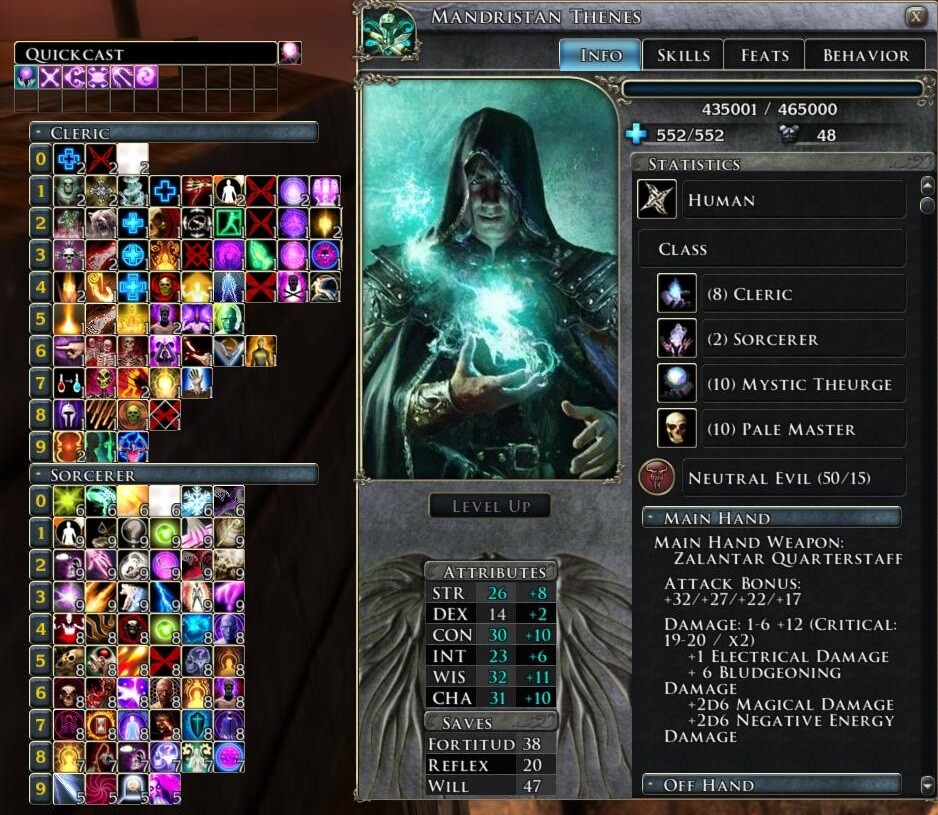
Changing gears now, Neverwinter Nights 2, especially Mask of the Betrayer and Storm of Zehir, has a very good crafting and enchanting system, letting you customize and also rename your items. Both of these are distinct in Mask of the Betrayer and Storm of Zehir. All of them feature Light Armor, Medium Armor, and Heavy Armor, as well as all types of clothing. You don’t have to wear armor; some classes like Wizard, Sorcerer, Monk, Duelist, and Invisible Blade work best without it. The game also features helmets, bracers/gauntlets/gloves, boots/shoes, cloaks, which each have a separate slot so there’s lots of customization.
Each category of armor (light, medium, heavy) has its own Armor Proficiency feat. So to equip medium armor, you need Armor Proficiency – Medium, while to equip heavy armor you need Armor Proficiency – Heavy. Without the appropriate feat, you cannot equip that type of armor. An ideal system.
Armors in Neverwinter Nights 2 include the following, in spoiler tags just to shorten the length of this page.
Light Armor
- Padded
- Leather
- Studded Leather
- Chain Shirt
Medium Armor
- Hide
- Scale
- Chainmail
- Breastplate
Heavy Armor
- Banded Mail
- Half-Plate
- Full-Plate
The armors above are listed from best to worst. Each of those listed above also has dozens of variants, each with a unique texture/color and also completely unique variants with one of a kind model and properties. Hardly any games can compare.
The shield categories in Neverwinter Nights 2 are: Light Shield, Heavy Shield, and Tower Shield. Tower Shield is the biggest and heaviest, with the strongest armor check penalty, the most protection, and an attack penalty (reducing chance to hit). Heavy Shields and Light Shields have no attack penalty, but maintain an armor check penalty (smallest on Light Shields). Light Shields have the lowest Arcane Spell Failure rating, with some specialized enchanted variants having none, making it possible to use one of those two Light Shields as an arcane spellcaster.
Both Neverwinter Nights games are also known for having many different types of weapons, perhaps more than any other fantasy RPG. Neverwinter Nights 2 has the following weapon categories (and many weapons for each one):
Tiny Sized Weapons – All are one handed and can thus be dual wielded.
- Dagger – Slashing damage, simple proficiency.
- Kukri – Slashing damage, martial proficiency, easiest to land critical hits of all tiny weapons.
Small Sized Weapons – All are one handed and can thus be dual wielded.
- Handaxe – Slashing damage, martial proficiency.
- Kama – Slashing damage, exotic proficiency.
- Light Hammer – Bludgeoning damage, simple proficiency.
- Mace – Bludgeoning damage, simple proficiency.
- Shortsword – Slashing damage, martial proficiency.
- Sickle – Slashing damage, simple proficiency.
Medium Sized Weapons – Whether or not they are wielded with one or two hands depends on the character’s size (which is determined by race, although there are spells to modify size and a feat to make all of these weapons one handed for smaller races with a -2 penalty to hit).
- Bastard Sword – Slashing damage, exotic proficiency.
- Battleaxe – Slashing damage, martial proficiency.
- Club – Bludgeoning damage, simple proficiency.
- Dwarven Waraxe – Slashing damage, exotic proficiency.
- Flail – Slashing damage, simple proficiency.
- Heavy Mace – Bludgeoning damage, simple proficiency.
- Katana – Slashing damage, exotic proficiency.
- Longsword – Slashing damage, martial proficiency.
- Morningstar – Bludgeoning damage, simple proficiency.
- Rapier – Piercing damage, martial proficiency, tied with Scimitar for easiest to land critical hits of all medium sized weapons.
- Scimitar – Slashing damage, martial proficiency, tied with Rapier for easiest to land critical hits of all medium sized weapons.
- Universal Sword – Slashing damage, any sword proficiency will add its benefits but no proficiency is needed to wield it.
- Warhammer – Bludgeoning damage, martial proficiency.
Large Sized Weapons – All are two handed, all are unavailable to smaller sized characters like Gnomes and Halflings.
- Falchion – Slashing damage, martial proficiency. Easiest to land critical hits of all large weapons.
- Greataxe – Slashing damage, martial proficiency.
- Greatsword – Slashing damage, martial proficiency.
- Halberd – Slashing damage, martial proficiency.
- Quarterstaff – Bludgeoning damage, simple proficiency.
- Scythe – Slashing damage, martial proficiency. Most damaging critical hits in the game.
- Spear – Piercing damage, simple proficiency.
- Warmace – Bludgeoning damage, martial proficiency.
Projectile Weapons
- Light Crossbow – Small sized, piercing damage, simple proficiency.
- Heavy Crossbow – Medium sized, piercing damage, simple proficiency.
- Shortbow – Medium sized, piercing damage, martial proficiency.
- Composite Shortbow – Medium sized, piercing damage, martial proficiency, has Mighty property which means a damage bonus is applied coming from either the shooter’s Strength modifier or the Mighty value, whichever is lower.
- Longbow – Large sized, piercing damage, martial proficiency.
- Composite Longbow – Long sized, piercing damage, martial proficiency, has Mighty property which means a damage bonus is applied coming from either the shooter’s Strength modifier or the Mighty value, whichever is lower.
- Sling – Small sized, bludgeoning damage, simple proficiency.
Thrown Weapons
- Dart – Tiny sized, piercing damage, simple proficiency.
- Shuriken – Tiny sized, piercing damage, exotic proficiency.
- Throwing Axe – Small sized, slashing damage, martial proficiency.
So that’s a total of 39 weapon types if you count the unlisted unarmed combat, and these weapons are available in different standardized sizes. Large weapons for example simply cannot be wielded by Halflings. One handed weapons can be dual wielded with pros and cons, and there are passive feats to improve dual wielding. For everything but Universal Swords, a proficiency feat (like Weapon Proficiency: Martial) is needed in order to equip them. There are other unlisted proficiency feats that are either race based or class based, like how the Dwarven Waraxe can be used by any Dwarf since Dwarves have a “Weapon Proficiency: Dwarf” feat.
Unlike modern RPGs, Neverwinter Nights 2 actually has unique armors and weapons; that is, ones with unique models and properties. Hundreds of them. Most modern RPGs have special weapons/armor with unique properties, but reused models (maybe retextured if we’re lucky). Not only are they totally unique in Neverwinter Nights 2: Complete and not only are there many unique ones, these items have distinct properties such that they are very desirable. Not run of the mill, non-rewarding artifacts like in modern RPGs. Some are admittedly overpowered while others have a balance between pros and cons. Moreover, they all have actual stories and lore behind them, despite there being over one hundred such weapons, over one hundred such armors/clothing, and far more. This is classic D&D, see the Weapons of Legacy material for even more storied weapons in D&D.
The material of armor, shields, and weapons results in a unique skin/texture/color. Material types and respective properties in Neverwinter Nights 2 include the following, underneath the spoiler tag to reduce the length of this page.
Hide
- Leather Hide
- Salamander Hide – Weight reduction, fire resistance.
- Umber Hulk Hide – Resistance to mind-affecting abilities.
- Wyvern Hide – Improved saving throws against poison.
- Red Dragon Hide – Weight reduction and very good fire resistance.
Wood
- Wood
- Shederran – Adds attack bonus to crossbows, Mighty attribute to bows (adds damage bonus to the weapon that is equal to either your Strength modifier or the Mighty Bonus, whichever is lower).
- Duskwood – Adds attack bonus to crossbows, Mighty attribute to bows, weight reduction to shields, magic damage on quarterstaves and clubs.
- Zalantar – Adds attack bonus to crossbows, Mighty attribute to bows, reduces shield arcane spell failure, electrical damage on quarterstaves, magical damage to spears and clubs.
Metal
- Iron
- Cold Iron – Only usable for weapons. Bypasses damage reduction on demons, fey creatures, and warlocks.
- Alchemical Silver – Only usable for weapons. Bypasses damage reduction on undead, lycanthropes, and some Baatezu (devils).
- Mithral – Magic infused metal that glows and glistens. Reduces weight and armor check penalties on armor.
- Darksteel – Dark purple in hue. Grants acid damage resistance on armor, and electrical damage bonus on weapons.
- Adamantine – Black as night. Grants universal damage resistance on armor, magic damage bonus on weapons, and bypasses damage resistance of creatures (like golems) and various abilities/spells.
Notice the rather random limitations, such as how Cold Iron is for weapons only, and how Shederran is only for bows. This is a somewhat unpleasant limitation.
So with all this content you may be wondering about balance. Many RPGs are unbalanced and as a result some classes and weapons become utterly useless. Thankfully, that is not the case here despite this game having more classes, weapons, more everything than pretty much every other RPG out there. For example, each of the weapon types listed above have a base damage, base critical hit range, and base critical hit damage multiplier. The weapons with the most critical hit range have the least critical hit damage multiplier (x2). The ones with the least critical hit range have a higher critical hit damage multiplier (x3 except for the Scythe which has x4). The Scythe, to balance it out, does overall less base damage than the other two handed weapons that have identical critical hit range.
Then there’s the fact that there are different types of damages. Some are more effective against certain enemies than others. Plenty of options, and all of them are valid. This doesn’t just apply to weapons either, but also races and classes. The only class with questionable usefulness is Shadow Thief of Amn, which is a Prestige Class.
Let’s go over some magic related things before moving away from gameplay. We mentioned the different types of spellcasting before, Arcane and Divine. Arcane spellcasters learn their spells from books, or they are naturally gifted like Sorcerers and Warlocks. Divine spellcasters get their spells from prayer to their deities. Below is a listing of all of the Magic Schools in Neverwinter Nights 2.
- Abjuration – Protective spells. Opposed to Conjuration.
- Conjuration – Summoning objects, creatures, or energy. Opposed to Transmutation.
- Divination – Seeing into the future. Opposed to Illusion.
- Enchantment – Mind-affecting spells. Opposed to Illusion.
- Evocation – Manipulating energy or even creating it. Opposed to Conjuration.
- Illusion – Spells that deceive one’s senses. Opposed to Enchantment.
- Necromancy – Negative energy, undeath, death. Opposed to Divination.
- Transmutation – Transforming one thing into another. Opposed to Conjuration.
Note that if you don’t choose a specialist school during character creation, then you may cast spells from any and all schools.
There are well over 300 spells, perhaps more than any single player RPG in existence, and none of them are lackluster! Each school has many awesome spells, and one thing that separates D&D games like Neverwinter Nights 2 from most other fantasy games is how cool and powerful some of the spells are. Take a look at these descriptions of some of my personal favorite spells. Note these aren’t actual spoilers, we just don’t want to add unnecessary mandatory scrolling on this page. You will see that spells have a verbal and/or somatic (waving of the hand) component. Somatic component means it takes longer to cast, while spells with a verbal component cannot be used when silenced (a magical status effect). Both components can be bypassed with metamagic: Silent Spell for the former, Still Spell for the latter.
 Unlike many other fantasy games and RPGs, spellcasters don’t have a mana or magicka pool, and their default attack does not involve any kind of spellcasting. In the Dragon Age games for example, mages are equipped with magical staves as their weapon, and their default attack is shooting little magic projectiles. D&D games like Neverwinter Nights 2 don’t have this, instead a spellcaster’s default attack is whatever weapon they have, like The Elder Scrolls.
Unlike many other fantasy games and RPGs, spellcasters don’t have a mana or magicka pool, and their default attack does not involve any kind of spellcasting. In the Dragon Age games for example, mages are equipped with magical staves as their weapon, and their default attack is shooting little magic projectiles. D&D games like Neverwinter Nights 2 don’t have this, instead a spellcaster’s default attack is whatever weapon they have, like The Elder Scrolls.
New spells are chosen when leveling up. Rather than relying on magic pools (commonly referred to as mana or magicka in other games), spellcasters have limited spellcasting in a different way. They can only cast a limited number of spells, and once used up they can’t cast any more until resting. This does not apply to Warlocks however, their casting is unlimited. But to be more specific:
Clerics, Druids, Paladins, Rangers, and Wizards store spells in a spell book and must memorize them. See this image below; known spells, chosen when leveling up, are on the left. Memorized spells and spell slots are on the right. Transferring spells from the left to the right and then resting will memorize those spells. Memorized spells can be used once per slot, so you can have one spell fill up multiple slots to use it multiple times. Once you’ve used the spell in battle, you must rest before they’re restored and can be used again.
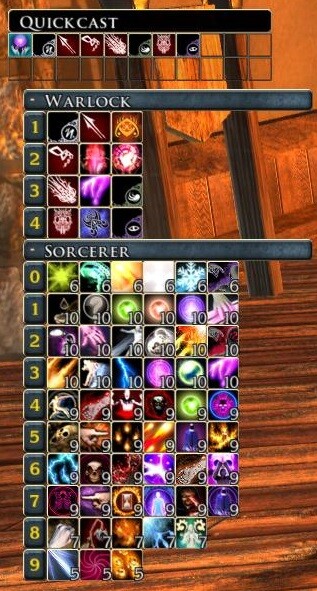
Notice how there are spell levels: Cantrips (level 0) all the way up to level 9 (most powerful). What level spells you can cast depends on your caster level and appropriate attribute score (e.g., Intelligence for Wizards and Wisdom for Clerics, this is discussed above).
Bards, Favored Souls, Sorcerers, Spirit Shamans, and Warlocks do not have this spell book and memorization mechanic explained above. These classes are more streamlined. You still choose new spells when leveling up, and these spells are automatically available to you after resting. Spell use is still limited though (again, except for Warlocks); each spell level has a limited amount of uses. So let’s say you have a limit of five uses for level 3 spells; you can use spells belonging to level 3 up to five times before you can no longer cast level 3 spells. It doesn’t matter if you cast the same level 3 spell five times or if you cast five different spells once, the limit is per spell level, and again Warlocks are exempt from this. To balance Warlocks, they don’t have nearly as many spells available to them. The most spells a Warlock can have is 9, with no metamagic. Warlocks are fundamentally different from anything else, using their Eldritch essence and mixing it with other abilities they gain with levels.
These different spellcasting mechanics are the main differences between Wizard and Sorcerer, and between Cleric and Favored Soul (the other main difference here being Clerics having a choice of many different domains). More casual gamers will prefer the latter type of spellcasting described just above as it’s more automated and there’s no configuration of anything. But the latter type is limited to less spell slots than the former, and the latter cannot use metamagic which allows you to upgrades your spells.
This is a toggled menu that’s bound to the F key by default. Spells are sorted by spell level. It is the most convenient way to cast. Alternatively, spells as well as any usable feat/ability can be dragged and dropped to the quickbar at the bottom of the screen. The quickbar has ten slots and they can be used by clicking them, or by using the associated number key. It does not expand like the quickbar in Dragon Age: Origins, but there are many quickbars; the one on the bottom actually isn’t just one, there are twelve, and you can cycle through them by holding shift and using the mouse wheel or by clicking the little arrows on it. You can also enable an extra quickbar that goes on the side of the screen, and a second bottom quickbar, each of these having ten slots. These may seem like small features but they make gameplay so much more convenient and fun and less of a chore.
Quickbars really aren’t enough for Neverwinter Nights 2 though. It has too much functionality. It’s best to put all selected feats/abilities in the quickbar, and also usable scrolls, wands, and similar items. But spells? Stick to the quickcast, which is more helpful for being sorted by spell level.
Furthermore, the quickcast menu provides full spellcasting functionality unlike the quickbar, like the selection of metamagic spells. Notice the three icons right beneath the word “QUICKCAST” in that picture? Each of those open a different quickcast menu. The one all the way on the left is for regular spells, while each other icon represents metamagic spells, like Empowered spells, Maximized spells, Quickened spells, etc. Metamagic spells occupy spell slots several levels higher than default, but are upgraded. Empowered spells do 1.5x damage for example, Maximized spells apply the full value rather than relying on a dice roll (e.g. a spell that does 1d4 damage normally, which is anywhere between 1-4 damage, will do 4 damage if Maximized), Extended spells last longer, Quickened Spells cannot be interrupted, Silent Spells are cast without a verbal component, Still spells are cast without a Somantic component, Persistent spells last 24 hours.
Metamagic thus allows you to “upgrade” any spell. All you need is a metamagic feat, and then in your spellbook choose a spell from that feat whenever you want. However, some spells “upgrade” on their own according to your level. For example, the spell “Flame Arrow” when first available launches one fiery magical arrow at a target, dealing 4d6 damage. However, for every four caster levels (or in other words, every time you level up that spellcasting class, which is Wizard or Sorcerer, four times) another arrow is automatically added to the spell. Also, there is an exception to that “level up four times” rule regarding this spell: If you have the Practiced Spellcaster feat, then you can level up four times in other classes instead, and it would still add additional flaming arrows to the spell. Many spells function like this, having such automatic upgrades.
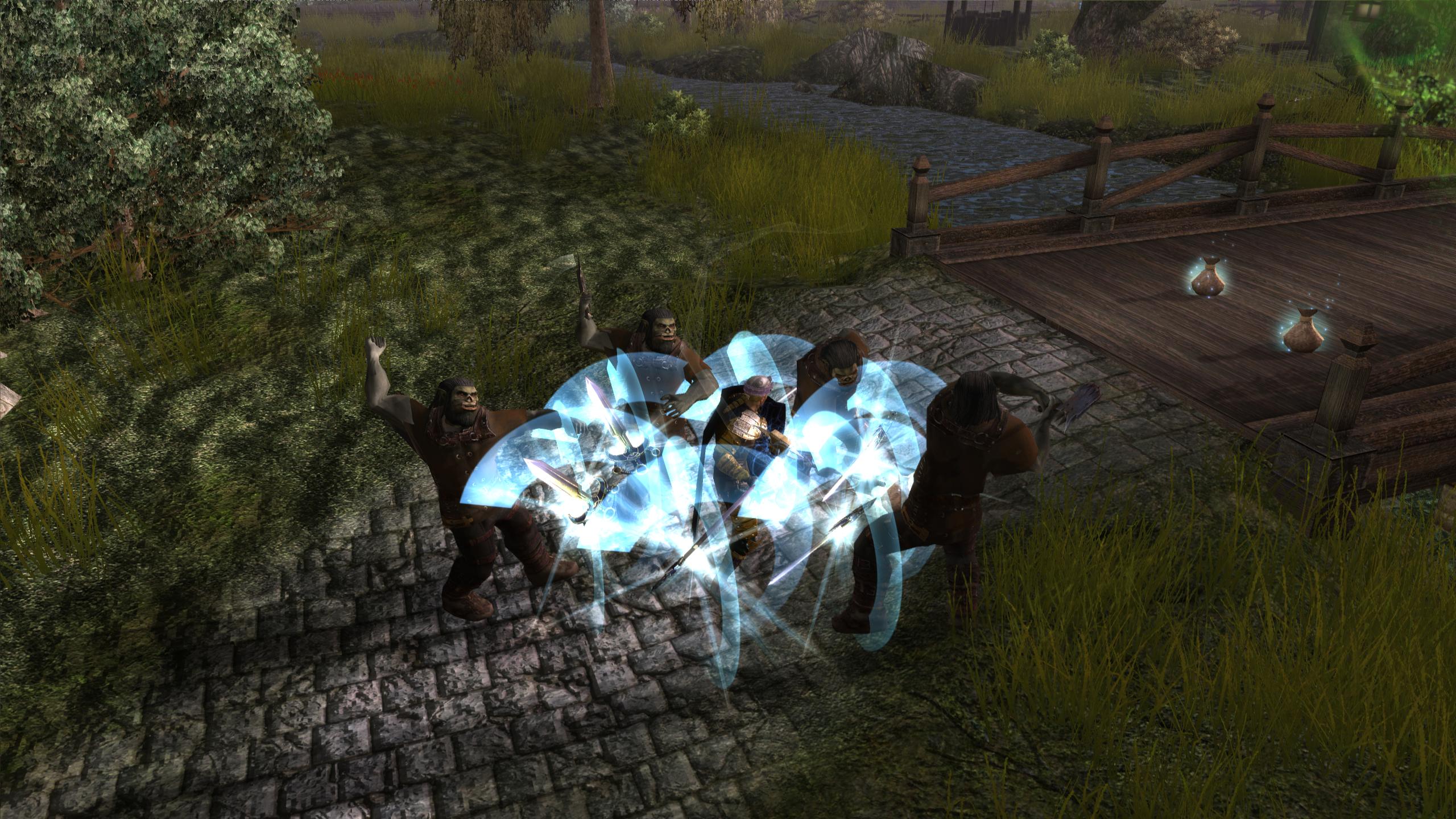 Blade Barrier spell cast on self. This is one of many multipurpose spells, as it can be cast on the ground and create a wall of whirling blades, or be cast around the caster like shown. And it looks awesome! The caster is unable to move for the duration of the spell if casting Blade Barrier on himself/herself.
Blade Barrier spell cast on self. This is one of many multipurpose spells, as it can be cast on the ground and create a wall of whirling blades, or be cast around the caster like shown. And it looks awesome! The caster is unable to move for the duration of the spell if casting Blade Barrier on himself/herself.Then the little icon on the far right of the quickcast menu enables spontaneous conversion for Clerics and Druids. Good or neutral Clerics can convert any one of their prepared spells (the ones in the quickcast menu) into a healing spell of similar level (e.g., Cure Minor Wounds, Cure Light Wounds, Cure Moderate Wounds, and the other spells from this lineup). Evil Clerics can convert any one of their prepared spells into a negative energy spell of similar level (e.g. Inflict Minor Wounds, Inflict Light Wounds, and all the others from this lineup). Druids can convert their prepared spells into a Conjuration based summoning spell of similar level (e.g., Summon Creature I, Summon Creature II, Summon Creature III, and the other spells from this lineup).
So both metamagic and spontaneous conversion must be used with the quickcast menu. Furthermore, combining Warlock invocations (think of it as combining spells) requires the quickcast menu. The combinations use the same slots as the metamagic buttons pictured above, since Warlocks can’t use metamagic.
We mentioned resting so now we’ll explain it farther. Resting is common in RPGs and it literally refers to taking a break and restoring fatigue. A rest function is built into the game and it can only be used in relatively safe areas, like in other classic D&D RPGs. You can rest in more dangerous places but there’s a chance of your rest being interrupted by an attack. It’s amusing that the rest animation is just the party members kneeling. You can also rest in certain dedicated rest zones, like when renting a room at an inn.
The game’s inventory is quite self explanatory even if not the neatest or most intuitive. It really needs item sorting. This is something modern cRPGs do well… one of few things they do well. 
The currency in Neverwinter Nights 2 is just gold pieces, straightforward and actually simplified compared to pen and paper D&D which has copper pieces, silver pieces (worth 10 cp), gold pieces (worth 10 sp), and platinum pieces (worth 10 gp).
So by now it should be somewhat clear that Neverwinter Nights 2 provides more playstyles and gameplay content than any other single player RPG in existence, and better balance at the same time. Higher quantity AND higher quality. Only Neverwinter Nights, The Temple of Elemental Evil, and Arcanum: Of Steamworks and Magick Obscura are respectable in comparison but still offer a lot less (although sharper contrast in playstyles with Arcanum, unmatched in that aspect). After these, The Elder Scrolls sits much further back. The gameplay of Neverwinter Nights 2 is a major source of addiction for many players, who still play today such as myself or the still living multiplayer community. The UI is excellent, surpassing those of modern RPGs like Pillars of Eternity and Tyranny. Sure, WASD movement and camera movement could be more fluid, and its inventory is overly basic, but apart from this it is utterly unrivaled in fantasy RPG gameplay, bringing the best elements from the older classics (diversity/variety/depth) and expanding on them tenfold, while providing the best elements from modern games (3D design, third person camera option + far more camera options than every RPG other than Neverwinter Nights).
To encounter such outright superiority in gaming is somewhat rare, but Neverwinter Nights 2 has it on full display. It is just better and more completely designed than everything else in its subgenre (tactical RPG). The only game to offer any gameplay design improvements since Neverwinter Nights 2 was Divinity: Original Sin in 2014, eight years later. Those improvements manifest in the form of physics interaction, whether it’s hurling any feasibly sized object, actual damage models (shattering containers in NWN 2 just causes them to disappear), or more advanced things like dynamic water puddles that can be electrified or frozen, and spreading fires. Apart from this however, it has no gameplay design improvements and while its gameplay diversity and depth are decent, it is a far cry from Neverwinter Nights 2.
Everything we have talked about so far applies to both single player and multiplayer. Multiplayer is incredibly customizable. Pausing can be enabled or disabled (it’s best disabled because it pauses the game for everyone obviously), a dedicated server application is included with remarkable functionality. All of its campaigns can be played in multiplayer co-op, private, LAN, or public, and it has many other modes including battle arenas for versus gameplay. Want to play custom campaigns or persistent worlds? Not a problem since auto mod downloading is a feature, which happens when connecting to a server that uses mods you don’t have.
Server admins can join their servers in Dungeon Master mode where they can edit levels, quests, player characters, and more in real-time. You thought ArmA 3: Zeus was impressive? It’s great, but it’s nothing new. It has been done before in past games, such as this one, and even by modders like the Server Side Mod for Crysis and Crysis Wars.
However, multiplayer by default is now disabled due to the GameSpy shutdown. Workarounds have already been made, particularly the Neverwinter Nights 2 client extension.
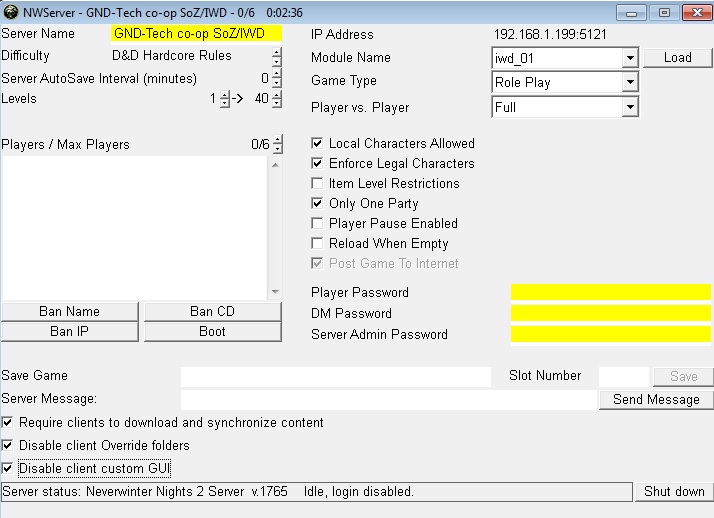
The dedicated server application.
Now you may be wondering what the downsides and flaws are, since we have yet to mention any. Well to be honest, the flaws are the simplest and stupidest kind: Bugs. Certain spells and feats are coded incorrectly and don’t work as intended. Modders have fixed most if not all of them by now, and it’s not hard to fix yourself if you know a little bit of C++ and have the patience to browse through thousands of files.
Another question and concern would be, “How well has it aged?” Well, consider the fact that it’s a pause-and-play game that can essentially be configured any way you like, that’s a good start. Because it’s pause-and-play and supports (but not mandates) point-and-click movement, that means user input is potentially at a minimum, not needing nearly as much as an action game. It relies heavily on mouse clicks, and has raw mouse input (no forced mouse acceleration like bad console ports). Combined with the fact that you should be pausing in combat a lot, clunkiness is not a big factor and it doesn’t interfere at all. WASD movement is rigid by today’s standards, but easily tolerable and it does have a walk button.
As far as aging goes, the worst aspect for some will be its combat pace. It’s slower than Dragon Age: Origins (which is the slowest Dragon Age game in terms of combat pace), the Star Wars: Knights of the Old Republic games, and Pillars of Eternity. The turn duration is what makes it slower. But it’s much faster than a full fledged turn-based game obviously.
Nevertheless, after this thorough analysis it is clear that Neverwinter Nights 2’s gameplay mechanics are objectively superior in just about every possible way compared to Baldur’s Gate, Baldur’s Gate II, Icewind Dale series, Dragon Age series, Pillars of Eternity, Tyranny. There is nothing these other games have that Neverwinter Nights 2 doesn’t have, with the exceptions being the Tactics system of Dragon Age: Origins and the fact that resting takes up supplies in Pillars of Eternity and Tyranny.
Original Campaign

The original campaign (often referred to as OC) is of course the first ever campaign and story, it was the initial release of Neverwinter Nights 2 in 2006. It is by far the longest campaign in the game, being roughly 60 hours long. It features many tropes of fantasy RPGs and was designed that way; Obsidian did not try to make an original story, they wanted to make a throwback to classic D&D RPGs. After all, the game was meant to be the the pinnacle cRPG experience, including almost all the D&D content from previous cRPGs and utilizing it all wonderfully. It certainly succeeds.
Neverwinter Nights 2’s original campaign sees you start as an orphan like many other RPGs do, as the purpose is to provide a clean slate for optimum role-playing. You play as you, yourself, in most RPGs including this one and all of the expansions.
There is a playable introduction that should not be skipped, as it introduces you to some key characters and it also cleverly introduces you the mechanics. One of these characters is your adopted father, who is seemingly cold and distant. You’re allowed to make of this what you will (there is dialogue about this), as Neverwinter Nights 2 is an RPG after all. The intro is peaceful and you get to experience your hometown, which is really a village called West Harbor in the middle of a swamp. This area was once the location of a terrible battle that was part of a war against the infamous King of Shadows. You can learn about this fairly early in the game, and it’s vital to the game’s story.

If you skip the lovely, friendly, cozy introduction, then you are dropped in the thick of it. After the intro or if you skip the intro, you wake up in your bed to the village being attacked. Many are slaughtered, and contrasting the oversaturated fantasy-looking environment and family friendly introduction, it’s quite brutal. So the big question is, why was the village attacked? And it was attacked by all sorts; mostly Duergar but even Githyanki.
Throughout this assault it becomes apparent that your step-father knows far more about it than he should. But he of course reveals very little. He sends you off on your next quest, telling you that the attackers were after a silver shard which he hid in a nearby crypt (because nobody would think to look there and because every fantasy RPG must send you to a crypt early). He does not tell you what the silver shard is, but he clearly knows. Perhaps he really is keeping information from you for your own safety? Again it’s up to you to decide how to handle this.
The crypt is of course full of hostile undead. This sets the tone for the rest of the game; many enemies are undead. After retrieving the shard, your step-father sends you off to Neverwinter in search of his brother who may know more about it, and to save West Harbor as it’s not cut out for those kinds of assaults. So you set off alone to Neverwinter with no companions, but your first stop at a hotel involves getting involved in someone else’s bar fight (the usual “Oh look, he must be with him!”), winning, and thus acquiring your first companion and drinking buddy. This companion is a Dwarf named Khelgar, and he loves to drink and brawl. He accompanies you on your path to Neverwinter as he seeks out a Monk temple. He wants to join their order because he loves fist fighting, and he once got served by a Monk in a bar fight. He wants to improve his fighting skills but amusingly has no idea about Monk life and ideals.


Of course the path to Neverwinter isn’t easy, and you must make many stops before reaching your destination. You are occasionally attacked by groups of Githyanki who call you “Kalach-Cha.” You are also stalked by an Elf woman, who is both interested in why you’re being attacked and of course is also interested in you as well. Along the way you pick up another companion, a female Tiefling rogue named Neeshka. She has the most annoying voice imaginable and is often the recipient of slander and even violence because of her race. Believe it or not she is not a romance option, as Neverwinter Nights 2 existed before it became mandatory to include multiple romances. She travels with you because you are the only person around who shows her any kind of acceptance.
The aforementioned Elf woman, a Druid named Elanee, eventually joins your party as well. She wants to find out why you’re being attacked, as she believes it is related to the source of troubles in the land (crops dying and soil becoming infertile). She is also obviously keeping secrets from you, which are revealed later on. To keep this somewhat concise we’ll mention those secrets now; her Druid commanders so to speak (yes they have a hierarchy) had her spy on you and your village long before you met her, but it was for the aforementioned reasons; troubles in the land which are also affecting (maddening) spirits of nature. While stalking you she quickly fell in love with you and became a creeper.
Before reaching Neverwinter you reach the first hub location, Fort Locke. It is essentially being run by Marshal Cormick, who is one of the most beloved and famous people from West Harbor, your home village. You help him out and then leave, and eventually reach Neverwinter.
Neverwinter city is a huge hub. Numerous companions are met here, two of which directly opposed to each other which makes for a somewhat interesting dynamic. But character development is not as deep as say Planescape: Torment or even Dragon Age, it’s not meant to be. But it’s still above average for a video game and it’s interesting enough if you accept that Neverwinter Nights 2 is not meant to tell an original, riveting story. It is a bit of a parody at times even.
It is nice to see that you can guide Khelgar down certain paths. You can help him become a Monk or not. Every companion has their own quest which can go multiple ways, although Khelgar is the only one whose class and abilities depends on you.
Many leads are pursued in Neverwinter, as well as one of the most interesting plot points in the game. You are forced to choose one of two paths, sort of like The Witcher 2. You must either join the Neverwinter City Watch, which eventually leads to you becoming one of the most esteemed guards for Neverwinter (joining the Neverwinter Nine), or you must join the Shadow Thieves of Amn. Now you can see why both of these are prestige classes. Why must you join them? Because this conflict is too big for you to handle on your own. So this means there are two vastly different versions of the game, again this may remind you of The Witcher 2. This greatly adds to the replayability, but it doesn’t just rely on this for replayability. It’s not like there are only two ways the campaign can play out. Because of how much role-playing there is, especially in dialogue, many other things have multiple outcomes and it makes playing different characters feasible and desirable, unlike the aforementioned Witcher 2.
For example, a Wizard player character can take advantage of Intelligence and Lore prompts in dialogue. A Paladin can take advantage of Diplomacy, and a Rogue + Shadow Thief of Amn can take advantage of Bluff. Each one of these will have completely different dialogue throughout the campaign. Then there’s the fact that each of these have different playstyles, and each class has multiple ways to play them. Longevity is a real strong point for Neverwinter Nights 2.
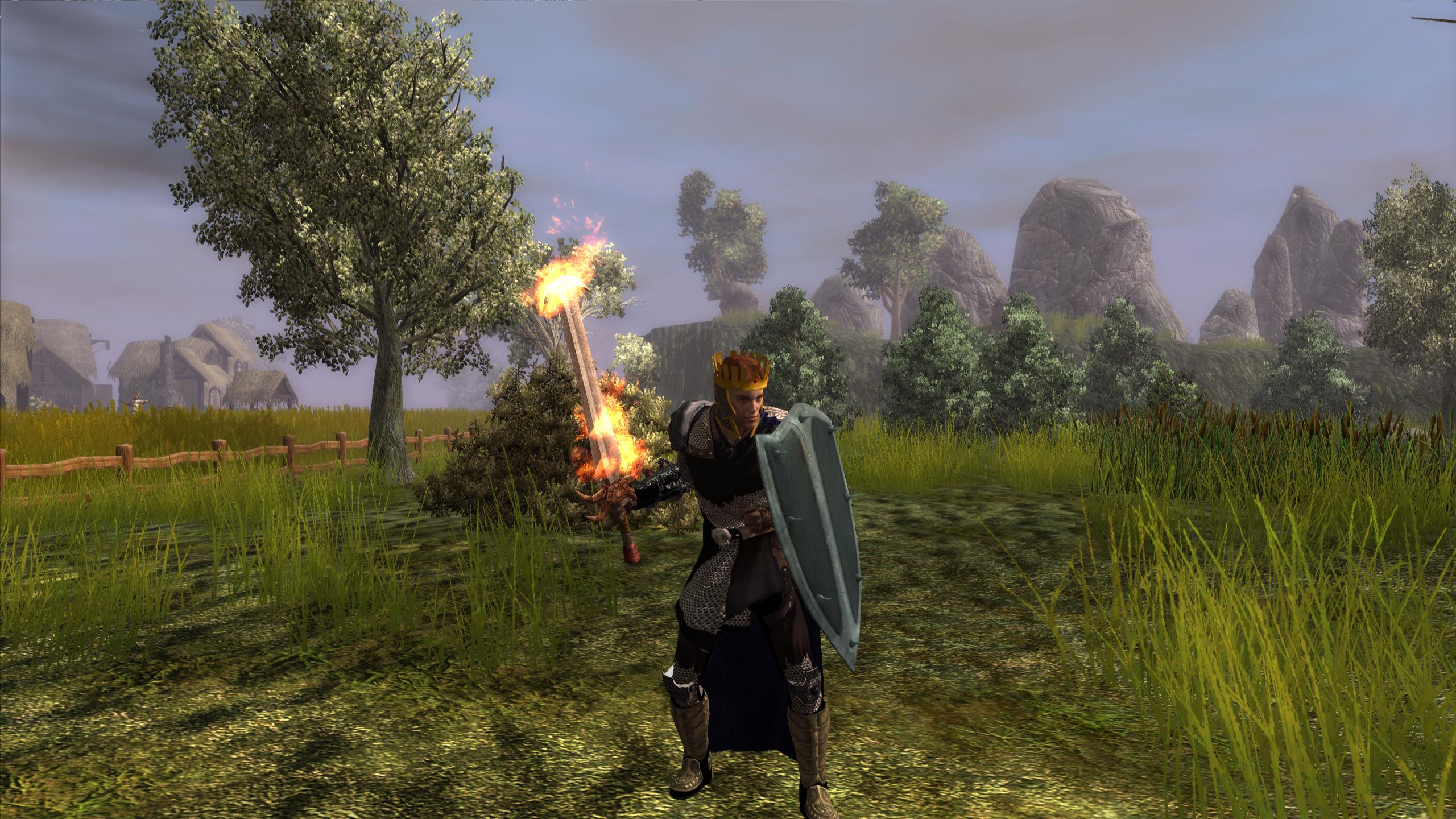 Fighter/Wizard/Eldritch Knight/Divine Champion build wearing light armor and wielding a flaming sword, just to provide a glimpse of the variety you can make in character builds. Very durable and hard to hit at the same time, albeit not to the extent of an elite Swashbuckler or Rogue for the latter, and not as durable as a pure Fighter in heavy armor either. However, this character can cast up to 9th level spells (which is the highest level).
Fighter/Wizard/Eldritch Knight/Divine Champion build wearing light armor and wielding a flaming sword, just to provide a glimpse of the variety you can make in character builds. Very durable and hard to hit at the same time, albeit not to the extent of an elite Swashbuckler or Rogue for the latter, and not as durable as a pure Fighter in heavy armor either. However, this character can cast up to 9th level spells (which is the highest level).The main conflict in Neverwinter Nights 2 is actually somewhat complex. More complex than any BioWare main conflict. The aforementioned King of Shadows is made out to be the main antagonist, and it is its influence that poisons the land and drove Elanee out to find you. So its forces seek you out throughout the game. The Githyanki are actually opposed to the King of Shadows, which brings up the question of why they attack you. Then there’s politics; the King of Shadows has influence over political leaders in Luskan, who have been in conflict with Neverwinter, and these tensions rise. Furthermore, one of the deadliest Luskan mercenaries is the brother of your friend from West Harbor, Bevil Starling, and Bevil eventually joins your forces. There’s a lot to juggle.
You are eventually given your own keep/fortress (called Crossroad Keep) and army, which you can rebuild and expand. This is what I meant by “your forces” regarding Bevil. Some of you may recognize this kind of micromanagement from Pillars of Eternity and it’s Stronghold system, which stems from this. The micromanagement has a pleasant amount of depth; you have some control over its funding (income is gathered from taxes, you have control over tax rate and you can also withdraw or deposit your own funds since you can get quite rich in this game), you can choose what to renovate/build, you can recruit people, you can put funds not only to construction but also better equipment for your soldiers, you can set the standard for recruitment (e.g. recruit only excellent soldiers or more common people), you have control over guard patrols and their location, and it all ties together affecting the status of different regions and at the keep itself. It’s awesome. You transform it from a ruin into a thriving community.
At times throughout the game you are given command of a large amount of people rather than your small party, which makes for a nice temporary change of pace. This game really doesn’t get enough credit for trying new things.
About the Githyanki: the King of Shadows is their enemy, but they want to face them alone. They and the King of Shadows pursue you for similar reasons; the silver shards. These silver shards are revealed to be fragments of a silver sword, the legendary Silver Sword of Gith, an artifact sacred to the Githyanki. It was originally forged by Zerthimon and wielded by Gith, and Ammon Jerro, one of the game’s characters and companions, once wielded it and battled the King of Shadows (and failed of course), but he had no concern about collateral damage which is his controversy. More importantly, a silver shard lies lodged within your chest. It has been there ever since you were a baby, during the battle between Ammon Jerro and the King of Shadows which saw Jerro use the Silver Sword of Gith to banish the King of Shadows (not permanently of course). How you survived is a miracle, but it gives you special powers when you finally wield the Silver Sword of Gith. And this is what Kalach-Cha refers to—it means Shard Bearer, which is the title of Neverwinter Nights 2’s protagonist.
So the Githyanki want to cut you open, retrieve the shard, and re-forge the sword to defeat the King of Shadows. Obviously you can’t allow this, and the Githyanki are too hard headed to accept any other outcome. One of the companions you meet (when you first enter Crossroad Keep) is Zhjaeve, a Githzerai. Githzerai are closely related to Githyanki (read up on their background and play Planescape: Torment) but are opposed to each other. The Githzerai avoid the conflict with the King of Shadows as they’d end up battling both the Githyanki and King of Shadows, because of how stubborn the Githyanki are. They can never agree on a common enemy. Zhjaeve however did not wish to sit idle while the King of Shadows returns and threatens everyone.
As for the King of Shadows himself? It’s not just a simple embodiment of evil like it may initially seem. It was originally a man, a talented human mage during the time of the Illefarn empire. The Illefarn empire is long gone and their underground cities are the source of tales and exploration for adventurers, but the King of Shadows remains. The Illefarn had magics that nobody else could understand.
This man sacrificed himself for the Illefarn, undergoing an extremely painful 100-day ritual which involved him being merged with the Weave, which is the source of all magic. This ritual resulted in the creation of the Guardian, who protected Illefarn from all threats. For a long time Illefarn and this Guardian were successful; the Guardian was an embodiment of magic and was too powerful for anyone to best. But when the Goddess of Magic at the time was slain, all magic ceased to function for a time. The Guardian, who was merged with the Weave, needed to look elsewhere for a source of magic, and the only option was the Shadow Weave. This is what led to the creation of the King of Shadows, it is the corruption of the Guardian of Illefarn.
The Guardian became a fearsome creature of darkness, and Illefarn recognized this and tried to destroy him. Their early attempts failed which led to them creating the Ritual of Purification, designed to destroy their corrupted Guardian. While the ritual was completed, thus weakening the King of Shadows, betrayal led to the King of Shadows winning the battle as it was able to convince others to fight for it and free it.
The King of Shadows still tried to serve its purpose in destroying enemies of Illefarn, but there was nothing left to protect after they all went against the King of Shadows and fell. Remember that all of this was long before Neverwinter Nights 2 took place. During the course of Neverwinter Nights 2, the King of Shadows hasn’t really changed. It was battling the remnants of Illefarn’s enemies which is apparently everyone in Faerun. It had been bested in the past, not just by Jerro but also by the Githyanki in the Astral Plane. Many Githyanki wield silver swords and they are an apparent weakness of the King of Shadows. But they aren’t enough to defeat it; what’s needed is the Ritual of Purification to weaken it, and the reforged Silver Sword of Gith (the most powerful silver sword) with you, the Shard Bearer, wielding it. This becomes the main goal of the game.
It is a long journey with many different paths. There are many things we didn’t mention, like how Ammon Jerro is initially made out to be a sort of antagonist before it is realized that you two have a common enemy, and before he becomes a companion. We also didn’t go over the exceptionally well done “courtroom” session, which occurs after the player is framed and found guilty of slaughtering an innocent village on Luskan soil. This leads to the player gathering evidence and allies to aid you in the trial, and Neverwinter itself is on your side even if you previously joined the Shadow Thieves of Amn, because they know that Luskan is truly guilty of the crime.
It is very interesting to see how much the dialogue can change in all of this, with regards to this trial. If you join the Neverwinter City Watch, by the time the trial happens you are already one of the Neverwinter Nine, and everyone in Neverwinter knows that you were framed and they all seek desperately to help you win the trial. But if you are a Shadow Thief of Amn instead, only the top brass of Neverwinter believes you’re innocent of the crime, and they are all reluctant to help you. The trial itself has a seemingly limitless amount of dialogue pathways, with dialogue prompts arising from so many different skills and more. Diplomacy, Bluff, and Perform are used extensively here, as are Intimidate, Truth/Lie prompts, Lore, Taunt, so many more.
There are many different endings and different fates for each companion. During the final battle, which is two parts and it’s what I personally consider the greatest boss fight of all time, Black Garius (a Luskan thrall of the King of Shadows, the game’s secondary antagonist who uses politics as his weapon until this very last battle) tries to turn your companions on you, and depending on how you interacted with your companions throughout the game some may or may not turn on you (at least two always do however, with one of these being an “either or” between two companions). After defeating Garius you must then fight the King of Shadows, but you can even side with him and get an ending that sees the end of the Sword Coast and possibly Faerun as a whole (and maybe even more). So much plot diversity and gameplay diversity, Neverwinter Nights 2 can be played many times and feel fresh each time.
It’s always interesting to see the trope that involves “returning to the beginning” in which key plot points, often near the end of the game, occur right where the game started. Planescape: Torment had this and Neverwinter Nights 2 as well as Mask of the Betrayer are similar. In the original campaign, the Silver Sword of Gith is re-forged in West Harbor, which was where it was destroyed when Ammon Jerro banished the King of Shadows, and it’s where you were born, where the silver shard was lodged into your chest, and where the game begins. The sword then becomes a usable weapon, classified as a Universal Sword so not needing any feats and benefiting from any sword weapon focus feat. This sword is the most memorable, unique weapon in video game history by our estimation. It has truly amazing abilities.
Had GND-Tech been around in 2006, Neverwinter Nights 2 would have won our awards for Best RPG and Best Story/Writing, not that the writing is particularly great but it’s certainly above average for video games and also the best of that year. Most companions have their own stories which you can influence too.
Neverwinter Nights 2 and even its expansions aren’t special with regard to level design. This is an area where this genre generally doesn’t reach its full potential. Baldur’s Gate II and surprisingly Dragon Age: Origins are stronger in level design, the latter only with regards to combat and the former is stronger everywhere in level design.
One thing worth noting is that companions in the original campaign are not very good builds at all. They don’t have ideal stats for their classes. This applies to the other campaigns too, but to a lesser extent. Khelgar is fine since you find him at around level 2, so you have control over most of his stats. For similar reasons Neeshka is not bad, but the rest of the companions are poor builds in terms of stats (attributes mostly).
But this is just the beginning. As epic as Neverwinter Nights 2 is, it’s just the warm up. The overture. The real story is what happens next in its direct expansion, Mask of the Betrayer, which takes place right after the original campaign. Neverwinter Nights 2’s original campaign is one of the best RPGs around, but it’s kid stuff compared to Mask of the Betrayer. Our analysis of Mask of the Betrayer begins on the next page.
Mask of the Betrayer

Neverwinter Nights 2: Mask of the Betrayer is the first expansion for Neverwinter Nights 2, released in 2007. It was designed to be the next Planescape: Torment, that is the next highly intellectual dark fantasy RPG with a really complex story. The original campaign dances on the border between fantasy and dark fantasy, as do the other campaigns, while Mask of the Betrayer is about as dark as dark fantasy gets.
Because it takes place right after Neverwinter Nights 2, you play as the same character and start at level 17. So this is a very high level campaign as epic characters begin at level 20. You will end the game at level 30, the highest level attainable in the game.
Despite the fact that it’s a direct continuation of the original campaign, Mask of the Betrayer mostly takes place in Rashemen which is nowhere near the Sword Coast. The Sword Coast is a more recognizable fantasy setting, and it’s where both Baldur’s Gate games take place. Rashemen is different and largely a countryside area.
Before going onto the spoiler-filled section below, we will discuss one unique gameplay mechanic of the game, and that’s enchanting. It’s totally different than in the original campaign. Your first companion, Safiya, has a satchel, and essences are found throughout the game. To enchant an item, you place both the item and an essence in the satchel, and cast the appropriate spell on the satchel (the spell is determined by the essence). There are different kinds of essences like elemental ones, spirit essences, and more, and there are different versions of each with some being more powerful than others. This enchanting is unique, simple, intuitive, and effective.
Of course, if you joined forces with the King of Shadows at the end of Neverwinter Nights 2, then Mask of the Betrayer can’t happen. Only defeating the King of Shadows is canon anyway. Truth be told, there isn’t much new we can write about this game that we haven’t written about in our “Ten Best Stories in Video Games” article. Mask of the Betrayer is listed there as the second best story ever told in gaming, with first being its spiritual predecessor Planescape: Torment. It also won Best RPG of the Decade (2000-2009), Best Sleeper of the Decade (2000-2009), and Game of the Decade (2000-2009). That’s how highly we praise Neverwinter Nights 2: Mask of the Betrayer.
Since we wrote all about its story already, we’ll take the liberty of quoting ourselves here.
You wake up in a mysterious dungeon, seemingly imprisoned although you are alone. A mysterious Red Wizard named Safiya comes to retrieve you, and you can get her to inform you that she was sent by her mother, Headmistress of the Red Wizard Academy she comes from. She’s also ignorant as to why she had to retrieve you—she was ordered only to bring you to her mother’s friend Lienna, and was given no extra details.
It is also revealed in this dungeon that you suffer from some kind of affliction, a curse. It is later discovered that this is known as the “Spirit Eater curse,” a legend of Rashemen. Those who suffer from this curse possess an insatiable hunger for spirits. The more they feed, the more they hunger, but not feeding results in death. It is up to you to decide how you will use this curse (inspired by Planescape: Torment of course, as was much of this game and story), how often you will feed, and who you will feed on. A brilliant role-playing aspect is that your curse evolves depending on how often you feed; new powers develop for those who feed a lot, and different powers develop for those who choose to suppress their hunger. This adds to the story since it shows that your choices do impact the world, creating a greater degree of immersion.
So your main goal is to find out the source of your curse, and if possible, to cure it. The Red Wizard companion will remain with you no matter what, even if the two if you hate each other—in this case she remains because it was her mother’s last wish (she dies somewhat early in the game… sort of, read on). Along the way you’ll meet some interesting companions, such as a great bear spirit named Okku who is viewed as a God by the local telthor spirits. Yes, Okku speaks Common. All spirits fear and hate you more than anyone else for obvious reasons (it is the Spirit Eater curse after all). Okku is initially a noble enemy; he gathers a spirit army and does battle against you because of the danger you and your curse present, and because you desecrated his family tomb (the dungeon/caverns you start the game in).
If you defeat Okku, you may devour him with your spirit eating powers, in which case he can’t be a companion obviously. But you may suppress your hunger and let him live, in which case he will join you to help you end your curse. It is later revealed that Okku once made a deal with a Spirit Eater—this Spirit Eater was a powerful mage but he did not want the curse to spread. He was noble, like you can be. Okku allowed him to create a magical warded prison in Okku’s family tomb—this is the prison you start the game in. This Spirit Eater died in this prison, as planned, and the curse was trapped. It wasn’t until someone brought you to this prison that the curse came back to haunt Rashemen, through you of course. Who brought you to that prison and infected you, and why? That is what you must find out. You can unlock some memories, in which you see two or three women cutting you open and removing the fragment of the Silver Sword of Gith from your chest, and saying “For love” which is of course foreshadowing.
Okku follows you to watch over you—not for your sake, but for everyone else’s sake. If you and your curse get out of hand, Okku is there to put you down, or die trying. His pact with the previous Spirit Eater puts him in conflict with his elders, who are angry at Okku (to say the least) for allowing the Spirit Eater curse to be trapped within their family tomb. Okku made a sacrifice; the curse was trapped, but it poisoned the dreams of his elders, disturbing their peaceful rest. This all comes up as a quest within the game, which can of course go in different directions due to the impact of player choice.
If you devour Okku, you are eventually able to recruit a different spirit companion in his place. This spirit companion, so to speak, is called One-of-Many and is recruited later in the game. It is thousands of tortured spirits trapped in one horrendous body. To make it even more disturbing, in life these spirits were terrible people, most of them at least. They were all enemies of Myrkul, former God of the dead (who ironically is dead during the time the game takes place), but note that this alone doesn’t make someone a terrible person. All of these spirits, including one innocent child, were cremated in a furnace in a church of Myrkul on the Plane of Shadow, which is where you meet this “One-of-Many.”
The initial dominant spirit is that innocent child who was cremated, now corrupted like all the others although not quite insane like most of the others. One-of-Many is always controlled by only one spirit at a time, but you get to choose which. This is where time constraints were apparent, and Obsidian wasn’t able to develop all of these spirits into fleshed out characters. They are distinct, but not detailed and lack both exposition and development. The child spirit, the most developed and most dominant one, is used well enough in this story; he is your guide down an evil path, which you’re already going down if you had the ability to recruit One-of-Many in the first place. A cunning, purely evil player will enjoy One-of-Many as his or her loyal pet.
Of course, Planescape: Torment had a similar character—an anchor to evil. This one was in the form of a speaking book. Mask of the Betrayer’s One-of-Many is more unique, although the name “One-of-Many” is a twist on Planescape’s “Many-as-One,” the hive mind ruler of a wererat group.
Throughout the game you may allow One-of-Many to consume spirits, which join with it. You may call these spirits out, and they may control One-of-Many. Each one is a different class, leading to different gameplay and a very useful, practical companion. The child is a Rogue, another one is an Orc referred to as “The Brute” which is a Barbarian, and the third potential spirit is a Warlock. Here’s a gameplay tip: each one deals an insanely high amount of damage.
Another companion you meet is Gannayev of Dreams, or just Gann for short. While Okku is a spirit and One-of-Many is many spirits, Gann is a Spirit Shaman—a dreamwalker, and also a hagspawn. This hagspawn has the ability to walk in peoples’ dreams, where he has befriended spirits which he may call on for aid in battle. He is fascinated by your curse, and he can be recruited from a prison (or you can simply not recruit him at all), so he joins you because it’s in his interests.
Gann’s hag mother, Gulk’aush, is important to the story. She carries with her the aforementioned theme of love; she loved a man, a human, and with him Gann was born. But the Slumbering Coven, the ruling hags who feed off the locals’ dreams for power, disapproved of this. As a result they forced Gulk’aush to devour her lover alive, and then they locked her in an underground maze-like prison called the Skein for the rest of her days. The encounter with her in the Skein is another Planescape: Torment reference, in which you visit a night hag named Ravel Puzzlewell who is imprisoned in a maze.
The last companion (not counting Ammon Jerro’s cameo), although not necessarily the last since you can recruit her or Gann in whichever order you like, is a half-celestial named Kaelyn, also referred to as Kaelyn the Dove because of her large white-feathered wings on her back. This again is a reference to Fall-From-Grace from Planescape: Torment, both of which sharing some personality traits, and interestingly enough Grace is essentially the opposite as she is a succubus, a fiend. Grace has fiend blood while Kaelyn has celestial (think angel) blood flowing through her veins.
Kaelyn is a former Doomguide of Kelemvor, turned cleric of Ilmater. She is banished from her homeworld on Mount Celestia for abandoning her faith, immediately raising questions about the judgement of gods and whether or not religion is truly important—more important than one’s deeds. These are questions that form the backbone of the story. Kaelyn serves as the guide to what the story is really about.
She, along with various texts found earlier in the game, will inform you of the Betrayer’s Crusade which was led by Akachi, now known as Akachi the Betrayer across the planes. This actually isn’t much of a reference to Trias the Betrayer from Planescape: Torment, just a similar title is all. Akachi was a Doomguide of Myrkul, the God of the dead before Myrkul’s demise and Kelemvor’s succession. Kaelyn follows in his footsteps; both abandoned the God of the dead.
The Betrayer’s Crusade is a story of its own. Akachi fell in love with a woman, who would go on to become the founder of the Red Wizard Academy of Thaymount (she is simply referred to as the Founder in the game, or the Red Woman) where Safiya teaches. Her life was suddenly taken from her when a spell she cast backfired on her, and this is heavily implied to be Myrkul’s doing as a test of Akachi’s faith, again portraying gods in less than favorable light. Well, Akachi failed this test. As a Doomguide, it was Akachi’s duty to comfort the dying, but death wasn’t a simple passing for everyone. Those who didn’t worship any deity were sentenced to the Wall of the Faithless, Myrkul’s creation, where their spirits suffered for an eternity. It didn’t matter if one led an honest, good life. If they didn’t follow a deity (any deity) they were tied to this fate. Akachi’s lover was faithless.
The Wall of the Faithless, as shown in Neverwinter Nights 2: Mask of the Betrayer. Inspired by the Pillar of Skulls from Planescape: Torment undoubtedly.Akachi pleaded with Myrkul for mercy. He could not stand to let his lover suffer on the Wall of the Faithless for an eternity. As a side note, this goes to show that Akachi was rather selfish, for he did not seem to have a problem with tens of thousands (or more) of other souls being trapped on the Wall of Faithless. Keep this in mind if you were thinking about calling him a hero.
Myrkul would not answer Akachi’s pleas, so Akachi abandoned his faith and led a crusade into the City of Judgement, house of the God of the dead in the Fugue Plane, with powerful allies including demons and other spirits he struck deals with, promising them great power. The crusade failed, and Akachi was cast onto the Wall of the Faithless. But just before he lost his mind completely, his essence was pulled from the Wall of the Faithless, creating the Spirit Eater curse which Myrkul released onto the mortal planes as a warning for what would happen to those who betray him. This was his punishment for Akachi, and it was horrible indeed. Since this was centuries before the game takes place, and since Myrkul was killed centuries earlier as well, it makes sense that the truth behind the Spirit Eater curse is not known by characters in the game.
So the Spirit Eater curse is Akachi’s twisted essence, which replaces none other than your soul. Again, the protagonist being without a soul is a direct reference to Planescape: Torment, in which the protagonist has no soul. In both games, the lack of a soul makes the protagonist flawed and incomplete, a soul is not meant to be separated from a person. The hunger you feel is the eternal hunger of the Wall of the Faithless, thus making the player character a slave to the Wall. For this reason, those with the Spirit Eater curse are bound to the Wall of the Faithless, and this is why there is no typical “cure” as it is the punishment of a God. This is extra motivation for you to cure yourself. More motivation is born if you romance someone. Only Safiya and Gann are romanceable and both are straight, for this game precedes the LBGT requirement that modern games have. Gann is bound for the Wall of the Faithless since he is, well… faithless. He mocks gods and those who worship them, so he of course wants to join you on your trip to the Wall of the Faithless.
We mentioned that Kaelyn explains Akachi’s crusade to you. What we didn’t yet mention is that she is also your link to starting a new crusade, or at least to your trip to the City of Judgement to try and cure yourself. Regardless of whether or not you lead a crusade, she will lead one. If you lead one then you two lead together.
While Akachi’s fate was terrible, and while he failed to tear down the Wall of the Faithless, he was able to do what he really wanted, and that’s remove his lover’s soul from the wall. She remained hidden in her Academy and devised a plan to save Akachi. Through powerful magics actually explored in the academy (because this is a detailed story that tries to cover its bases), she was able to split her essence into three pieces; Nefris, who is Safiya’s mother, Lienna which is the woman you were supposed to meet early in the game in the city of Mulsantir, and Safiya herself who represented all that was good about the Founder. It was the Founder who infected you with the Spirit Eater curse in the first place, because she believed you would be able to succeed where Akachi had failed, and lead a successful crusade against the Wall of the Faithless.
The Founder was not without her adversaries though. She was Akachi’s lover, but Araman was Akachi’s brother. It is implied (by the Founder) that Araman had problems with his ego for living in the shadow of his brother, which he denies of course. He opposed the Founder and his brother; he believes in order on the planes, and going to war against the gods will destroy this order. He has a good point. The Founder, on the other hand, says that love should triumph over all. Again, it’s up to you to decide. Will you follow in Akachi’s footsteps and lead his crusade? Remember that you are bound to the Wall of the Faithless too. It’s possible to not lead his crusade, and instead plea for only your soul to be removed from the wall thus curing you of the curse. To become one with your soul again, yet another Planescape reference.
Araman is the one who led a coup early in the game against the Founder, since he knew the truth behind her. This is what led to the murders of Nefris (Safiya’s mother) and Lienna, who were slain by Red Wizards (Nefris offscreen). There is a point in the game where you have to side with either Araman or the Founder.
The Founder’s trust in you is very understandable, after all you are the one who defeated the King of Shadows while wielding the Silver Sword of Gith, which ironically is the key to opening the portal that Akachi created which leads from Myrkul’s church in the Plane of Shadow (in Shadow Mulsantir specifically) to the City of Judgement. Akachi led the crusade wielding the Silver Sword of Gith, and you may follow in his footsteps.
Kaelyn the Dove is far more noble than Akachi, for her motives are not selfish at all. She does not have any loved ones bound for the Wall of the Faithless, nor is she bound there herself since she is a cleric of Ilmater (thus not faithless). She sees the Wall of the Faithless as a cruel injustice, and seeks to tear down the wall for that reason. She doesn’t want to rescue just one person like Akachi did. But it is also suggested that the Founder becoming a victim of the Wall of the Faithless opened Akachi’s eyes to the injustice, which caused his motives to grow. It’s up to you to decide what to believe.
In our lengthy summary we did skip some things, such as the heavily symbolic dream sequences which offer lots of foreshadowing about the Founder and Akachi himself, and how Gann can walk you through these dreams. We’re just going over the most significant elements. We don’t want to drag on for too long, you know?
There is a lot of material to think about in this story, as you can see. From Akachi’s motives to whether or not Myrkul was unjust acting the way he did, and of course the Wall of the Faithless itself, we have a story that questions the foundation of religion and portrays gods as being far from perfect. Should we blindly follow religion? Should we consider deities to be the pinnacles of existence?
Through the tale of Akachi and the Founder and how you and Safiya are tied in, we are given a love story that spans centuries or more, that spans mortal and immortal planes alike. We have a story about justice (Kaelyn) vs love (Akachi and the Founder), and you are forced to ask whether or not love is selfish. You may also ask how far you would go for love, particularly if you play as a good character who romances someone.
We also have outstanding irony in this story. The way your character fills Akachi’s shoes is perfect, including the possibility of falling in love with an essentially perfect incarnation of the Founder in Safiya (this romance is encouraged for good characters by the game itself, similar to how romancing Liara is encouraged in Mass Effect by all three games). You can lead your own crusade just like Akachi did, with Akachi’s old allies on top of that due to the contracts he made with them (and this is done twice; metaphorically earlier in the game on an acting stage, and then for real near the end).
More irony comes from an evil player character who spins the story on its head. You suffer from the Spirit Eater curse, Myrkul’s creation. You meet Myrkul drifting in the Astral Plane. Yes, we said he’s dead, but gods don’t die like mortals do. He drifts almost asleep in the Astral Plane. You see, Myrkul didn’t just create the Wall of the Faithless as punishment for the faithless; it also strikes fear into the heart of mortals, and that fear sustains him.
Upon encountering him (the Founder did the same in the past), you can use your curse, Myrkul’s creation, to devour Myrkul. This seems incredibly ironic, and it is to some extent, but he anticipated this. Devouring him wouldn’t destroy him, his essence would live on within you opposed to just drifting in the Astral Plane, so he is okay with this. Here, a character who isn’t merely serving his self-interest will experience greater irony. If you suppressed your hunger more than you sated it, then by this point you will have an ability called “Eternal Rest” which grants a peaceful, eternal rest to tormented souls. Using this on him is incredibly ironic; Myrkul wishes for his essence to linger eternally, and he can be undone by his own creation, the Spirit Eater. He couldn’t have anticipated the curse evolving the way it did, if the player successfully suppresses it throughout the game and gains the Eternal Rest feat.
More irony is present later on in the game. When finally meeting the Founder, and discovering that Safiya is but a fragment of her (which is even more of a surprise to her), she apologizes for forcing her will upon you, for infecting you with the Spirit Eater curse. She tries to explain it’s for love and justice, though it’s clear only love fuels her (justice fueling a Red Wizard is practically unheard of, although Safiya contradicts that stereotype). You have Akachi’s essence within you, and it’s very possible that your character has fallen in love with Safiya, a part of the Founder. She anticipated this, and it’s why she sent Safiya as your guide. Those who do romance Safiya are bound to agree with the Founder to some extent. “For love.”
But if you are a vengeful character, you might hate the Founder for what she did. You can use the Spirit Eater curse, which we remind you is Akachi’s essence, to devour the Founder, whom we remind you was Akachi’s lover. Safiya obviously won’t stand for this, so you can devour her as well. Horribly ironic.
All of this is why Mask of the Betrayer’s romance with Safiya is the best written romance in gaming. It’s actually significant, not just a tacked on romance for the sake of romance. It strongly ties into the story and creates resounding irony which is completely different depending on player choice.
If you choose not to lead a crusade, instead acting out of selfishness or perhaps if you think the crusade is wrong, to doubt and go against a God’s will is wrong (note that Kelemvor himself, the current God of the dead during the game, does not agree with the existence of the Wall of the Faithless or Myrkul’s methods), then it’s possible to end up in direct opposition to Kaelyn the Dove. You can even do the opposite of what’s expected and help quell the crusade, which will cause Kaelyn to turn on you. So instead of fulfilling Akachi the Betrayer’s position, you may betray the succession of the Betrayer’s Crusade by betraying Kaelyn and Akachi’s allies. This game truly uses irony better than any other.
The last significant piece of irony is at the very end of the game. Three fragments of Akachi still lingered all this time, throughout the curse’s existence: The Boy which represents Araman if we recall correctly, The Woman which represents his lover, and The Wall. These three pieces are given to you in three mask fragments throughout the game during dream segments; together they form the Mask of the Betrayer, which has the power to reforge Akachi’s lost mind, grant him an eternal rest, and cure you of the curse. If you do this, you end the game as a relatively normal, cured person.
The finale involves chasing down “The Faceless Man,” the confused shadow of Akachi’s existence, the curse itself, which you must battle. You can use the Mask of the Betrayer on him like we just said, or you can instead devour him, thus becoming one with your curse, maximizing its full potential. Having done this and having devoured Myrkul earlier in the game, Myrkul’s essence will live within you while you will have mastered your curse, essentially becoming a new, horrible creature of unfathomable power. Yet, because of your mastery of the Spirit Eater curse, you retain your mind and have more control over your curse than ever before. You are no longer a slave to the Wall of the Faithless.
Doing this puts you in direct opposition to Kelemvor and pretty much every being, mortal and divine, in existence. You can view the ending of such a character in the video below.
Myrkul and the Founder planned much with you, but you can outwit them, best them, and it’s wonderfully and horribly ironic. You start the game as a weakened, cursed man, and can end the game as a relatively normal man, or as a being feared by gods. It certainly helps that this game has one of the best soundtracks of any game, Akachi’s theme in particular standing out perhaps the most. There are so many ways to view this story, and you can act on your view without much limitation. This is why Neverwinter Nights 2: Mask of the Betrayer is both one of the greatest RPGs and greatest games ever made, and to have all of this combined with some of the best writing quality in video game history is almost too good to be true.
One thing we haven’t talked in-depth about is its unique Spirit Eater gameplay mechanics. Here we see more of its amazing role-playing. You as the Spirit Eater can use your curse against your enemies, but you can also use it for good. Depending on how you use it and how freely you use it, you get different Spirit Eater abilities. The first Spirit Eater ability is of course the ability to devour spirits. Feeding on spirits sates your hunger but makes you get hungry more often. Less selfish characters will use the Suppress ability when hungry, to suppress their hunger. It isn’t nearly as satiating but it doesn’t harm anyone else.
If your hunger drops, there are penalties. If it drops a certain amount you get statistic penalties, and if it drops more you get more severe ones. You can even have your overall character level reduced due to hunger, and if your satiation level drops to zero then you die and must reload your game. There are many different Spirit Eater abilities and which ones you get depends on how you use the curse, giving you the feeling of influence over the game world, like a proper RPG. Similar to Planescape: Torment and how the world reacts to how you use your immortality, but with even more reactivity here in Mask of the Betrayer.
Another really cool gameplay aspect is the high level gameplay, most notable in battling in the City of Judgement as an epic level character, fighting only other epic level characters, although the lowest level you can be at any point in this campaign (not counting any level drain effects you might have) is 17, so all of it is high level. The result is dazzling, amazingly powerful spells on both sides, and one mistake can kill your whole party especially on harder difficulty settings. This makes for some of the most epic battles ever, even if the terrain design isn’t anything special.
The Silver Sword of Gith returns as a weapon, as it is needed to open Akachi’s gate to the Fugue Plane. It has a completely new set of abilities in Mask of the Betrayer, but is no less noteworthy.
As with the original campaign and Planescape: Torment, Mask of the Betrayer has the player returning to places often. It begins in a barrow, which you revisit in dreams and significant events occur in said dreams. You return to West Harbor and Crossroad Keep inside your own mind, chasing what’s left of Akachi through your memories. This is sort of a defining trait of Neverwinter Nights 2 as a whole.
Well, there isn’t much left to say. Mask of the Betrayer is one of the absolute best RPGs and best games ever made. An excellent spiritual successor to Planescape: Torment and unique in its own ways. As far as story heavy RPGs go, besides Planescape: Torment only Arcanum: Of Steamworks and Magick Obscura, Vampire: The Masquerade – Bloodlines, and Fallout: New Vegas can compare, when looking at writing quality and role-playing combined.
Storm of Zehir

While Neverwinter Nights 2: Mask of the Betrayer won our award for Best Sleeper of the Decade (2000-2009), Storm of Zehir, the second expansion released in 2008, is hardly less deserving. Numerous hardcore cRPG fans give credit to Mask of the Betrayer for its writing quality and role-playing at least (but not nearly enough), but seeing Storm of Zehir get its due credit is rare. Like Mask of the Betrayer, it is the best at the type of RPG it is, although Wasteland 2 isn’t a shabby runner up.
Storm of Zehir starts you at level 4, and it’s a create your own party game like Icewind Dale and some others. So “you” aren’t just one character in this game, you are four. This game does not have much in the way of scaling enemies (scaling to your level at is); random encounters are scripted to be higher level in certain regions, and they are programmed to be higher level depending on where you are in the plot. We would have strongly preferred Storm of Zehir to be a higher level campaign with epic level gameplay and scaling enemies, since as it stands Mask of the Betrayer is the only campaign with epic level gameplay. I personally finished the main quest line in Storm of Zehir at level 17, although some of my party members were even lower than that. We would have preferred the game to start players off at level 12 or higher, to include epic level gameplay which we enjoy more due to the more powerful, amazing abilities and perhaps greater difficulty (higher risk, higher reward combat).
Storm of Zehir uses its 27 skills masterfully with its create your own party design. It features an “overland map” that’s interactive and actually a 3D world, unlike the travel map in many other RPGs like Dragon Age: Origins. So when traveling between locations, it’s real time player-controlled traveling from a distant isometric viewpoint and point-and-click movement. Again, like Wasteland 2, but even more interactive. Only your currently selected party leader shows up on the map and his/her skills are what affect it. The overland map has vastly different mechanics than the rest of the game.
Encounters are randomized and you can avoid being detected if your Hide skill is high enough. Enemy detection is dependent on your Spot and Listen skills, while the ability to detect hidden locations and items is dependent on your Search skill. Your Survival skill affects movement speed which is very important for fleeing from enemies or pursuing fleeing enemies, and there’s lots of potential object interaction like making healing kits out of herbs if your Heal skill is high enough.
Exploration is encouraged on the overland map as there are many locations to find, like ruins, crypts, settlements, and more including some very distinct, unexpected places. It is the least linear Neverwinter Nights 2 campaign, you can delay the main plot as much as you want and do other things, like an open world game.
Another noteworthy feature of Storm of Zehir is the party dialogue system; you can use your whole party in dialogue, which is particularly useful in an RPG like this with numerous dialogue skills. Wasteland 2 has the same feature, albeit with a more neat UI. But this along with its overland map, the plot design, and the complexity of Neverwinter Nights 2’s gameplay is why Storm of Zehir is the leading RPG of its kind, the create your own party type of RPG.
Because of the wide array of skills used, a versatile party is suggested. Having a Druid or Ranger is highly beneficial especially for the overland map. You may want multiple dialogue skills, or not if you aren’t in the mood for talking.
Despite being a create your own party game, there are characters who are potential companions. Each one of them provides you with full control over their leveling unlike the other campaigns. It’s annoying for example that you can’t choose prestige classes for your companions in the other games. We should be allowed to make Khelgar a Dwarven Defender. But I digress.
You will spend about half of your time in Samarach, which is very far from the Sword Coast. It consists of jungles and is warmer than the Sword Coast and Rashemen. The other half does take place within the Sword Coast and it includes Neverwinter, Crossroad Keep, West Harbor, Port Llast, and much more. At some point you unlock the ability to travel freely between both regions.
The overland map is one significant mechanic exclusive to Storm of Zehir (that is, a mechanic not included in the other campaigns). Another is its crafting system which still relies on crafting stations, but it relies more on recipes, a new feat, and it creates different items than in the base game with potential for very powerful ones. Then there is the aforementioned party dialogue, and the last unique mechanic is its micromanaging which is totally different than that of the original game. This is explained below.
Storm of Zehir isn’t quite as story driven as the original campaign, let alone Mask of the Betrayer. It doesn’t really attempt character development and there’s more freedom. Because of the extra freedom, you may encounter enemies that are too high level for you to defeat; something that isn’t really a problem in the original campaign and is only occasionally a problem in Mask of the Betrayer.
You play as a group of adventurers. You can define their biography, just like you can with individual character creation. You can just play as one character but it’s recommended to play a party of four which is the way the game was designed to be played and it’s much more fun. Storm of Zehir starts off on a ship called the Vigiliant, sailing at sea near Samarach. A storm and perhaps an act of sabotage wreck the Vigilant and only a few survive. Of course, powerful people in Samarach have use for an experienced adventuring group like yours. You’re immediately hired by someone very powerful and wealthy, Sa’Sani, the leader of a merchant company without a name and known only for its logo.
The work pays fairly well and is nothing controversial; retrieving shipments or ensuring other shipments arrive safely, gathering materials, the like. Samarach is a very dangerous place, and its residents are paranoid about the Yuan-Ti which are snake people. Some of these snake people can blend in and look human, and are known to infiltrate communities and sometimes pose as merchants. There is a power struggle between the Yuan-Ti and everyone else. This is the main conflict that’s explored within the game.
Sa’Sani is looking to become the largest trading empire not only in Samarach, but also the Sword Coast. With the help of some Gnomes you are able to open up a portal between both, and you spend the majority of the game expanding this trading empire throughout both regions. It even sees you gain leadership of Crossroad Keep, with Khelgar being your right hand man. Micromanaging is introduced back in Samarach and also later in Crossroad Keep. You are given similar micromanagement mechanics as the original campaign (especially in Crossroad Keep), plus the ability to create and manage trade routes, outfit your trading caravans, control over funds with the ability to withdraw and deposit, and much more. This provides you with heavy influence over the world as locations you set up trade routes with grow and become more prosperous.
More freedom of choice is given to the player in Neverwinter, in which the player may invest in one of three trade companies to get a footing in Neverwinter. Each one is geared toward a different alignment somewhat. This leads to numerous additional quests.
The player also revisits West Harbor. This poor village never gets a rest. You get to see how it was rebuilt after the events of the original campaign, and a large wall and guard posts were erected around it. It seems they’ve learned their lessons. But these were no match for the two dragons that landed there and took people captive. It’s up to you how to deal with this situation and it can end well for West Harbor, or end in further tragedy to the poor village.
But there’s always the threat of the Yuan-Ti. They are an elusive enemy in addition to being deadly in combat. But you don’t even know what they’re planning. You helped Sa’Sani build a massive trade empire and you can use it to shape both Samarach and the Sword Coast how you want, but there’s obviously more to it. The Yuan-Ti begin to attack you specifically, and mention Zehir like religious zealots. They remain a mystery for much of the game/expansion, and things elevate when Sa’Sani murders one of her own in Crossroad Keep and disappears. It is revealed that she is a Yuan-Ti. You must then find her and find out what happened.
As it turns out, Sa’Sani is not with the Yuan-Ti forces that attack you. The ones who attack you are a religious group, house Se’Sehen, who worship their God Zehir and want to conquer Samarach. Sa’Sani and her house (family) want control over Samarach but in a largely non-violent way, by means of economic control of course which she accomplished thanks to you. The murder she committed was more of a panic really as her identity was discovered.
But this Zehir threat must be eliminated. Ironically you do so by invading their house like snakes; multiple dialogue skills is of utmost importance, so party build really matters. Or you can fight your way through which is very challenging. This all culminates in an epic and of course challenging boss battle in a memorable location, the boss being the “Herald of Zehir” wielding an incredibly powerful weapon.
After taking out house Se’Sehen you are left to deal with Sa’Sani. You may slay her or not. Either way you never see her again. The game is now finished, but there is no ending. It is like an Elder Scrolls game in this regard. You still have your merchant company, no longer Sa’Sani’s. There may still be plenty of things to do depending on what you’ve done already, since it’s an open ended sandbox game.
Storm of Zehir is not story driven in a usual sense, it’s more about making your own story and also maximum role-playing. It is one of the most open ended RPGs especially considering it’s not truly open world. It is the best RPG of its kind, providing more role-playing than any other create your own party RPG like Wasteland 2, Icewind Dale, and others. Therefore it is one of the absolute best RPGs to date.
Mysteries of Westgate

Many people who know of Neverwinter Nights 2 aren’t even aware of the existence of its last expansion, Mysteries of Westgate, released in 2009 and developed by Ossian Studios (the only expansion not developed by Obsidian). This is because there are many different editions of Neverwinter Nights 2, too many to count even. The one that was on Steam (which was removed) was Platinum Edition, which included the other two expansions but not Mysteries of Westgate. We are reviewing Complete edition from GOG which does include it.
Mysteries of Westgate is the smallest scale campaign out of all the official ones, lasting between 20-25 hours. You start at a slightly higher level than Storm of Zehir. Unlike the other expansions, you never visit the Sword Coast in this one. It takes place only in Westgate which is still in Faerun like the other expansions, but it’s a distinct place. It’s a port city known for its diversity, with inhabitants of all kinds of races, and also known for its corruption. Mysteries of Westgate also includes the coolest shop, which doubles as a museum, that we’ve ever seen in a game.
The player character is an adventurer who discovered a cursed mask in a dungeon, and it results in nightmares and lost sleep. You visit Westgate in search of answers after learning that it may belong to a group of thieves known as the Night Masks, who are known to have strong sway over Westgate.
Your cursed mask grants some unique powers when wearing it, namely the ability to see portals and the like, but it’s unhealthy to wear it. You are given a companion right off the bat, Rinara, a rogue who seems to know more than she lets on. Two other companions become available and each has a stake in your quest. These companions are Charissa, a Cleric of Tyr, and a fallen Paladin named Mantides who walks the border between light and dark.
Since it only takes place within Westgate and underneath it, this is the most linear campaign but it’s still not totally linear. As expected, the Night Masks don’t want to be found. It doesn’t take long for it to be revealed that Rinara is an ex-Night Mask, so she has valuable information but may be difficult to trust. Again you are faced with a choice here, about which faction to join. The Night Masks are hostile, and it is revealed they have much power in Westgate. You must join an opposing faction as each promises their aid; one is the Ebon Claws, who don’t seem to be much more than thugs. The other is the temple of Lathander, a more righteous group.
Throughout Mysteries of Westgate you will explore interesting, spooky locations. The temple of Shar is involved, and like with Khelgar in the original campaign you can really guide Mantides down certain paths. You can have him join the temple of Shar and become a genuinely scary guy. Or you can help him come to terms with his past. And what is his past, you may ask? It’s tied with Rinara and the Night Masks. He slaughtered many of them in an act of vengeance, and in so doing fell from his status as a Paladin.
The Ebon Claws have their own secrets. They’re wererats! Needless to say, going down their path doesn’t end well. They eventually turn on you, but not until after they help you. As for the Night Masks, their secrets are revealed as well; they are vampires. The ending gives you a choice; join the Night Masks, which will rid you of the effects of the cursed mask. Doing so will turn all companions against you, and then you will be sent to destroy the Ebon Claws. Or you can keep the mask and destroy the Night Masks.
It’s not the most original story, but Mysteries of Westgate has a very interesting campaign thanks to the role-playing and unique locations. It has some of the most memorable locations of all the official campaigns. The characters are interesting even if the character development is not top tier. Mysteries of Westgate is more up-front about companion influence, like Mask of the Betrayer as well as Dragon Age. It’s a worthy expansion to Neverwinter Nights 2 and an interesting departure from the Sword Coast. It is also a bit darker in tone than both the original campaign and Storm of Zehir.
How Modern Technology Would Improve It
This is a new feature I’m adding to reviews of old games, or backwards newer games using/mimicking old technology to target nostalgia over quality. PC gamers today are often extremely backwards minded and against innovation, hence modern game design typically reflecting this.
Although every favored classic game utilized technology to improve itself to the point of becoming a classic, this fact is lost on most PC gamers today. So it is necessary to analyze how a classic or modern technologically regressive game would benefit from the latest and greatest technology, since we have the technology today to overcome almost all game design limitations of the past.
The Neverwinter Nights games are begging for spiritual successors made with modern technology! This would be my ultimate game – a modern cRPG designed to encompass everything a tabletop RPG can do, but in video game format capable of single player. This is essentially what Neverwinter Nights wanted to be, and it’s now possible via technology such as the following (all of which is available tech):
- AI dungeon master capability for both single player and multiplayer
- It’s now possible to make all of Faerun a single, seamless open world map with no loading screens via several technologies: advanced distance-based level streaming (like Unreal Engine 5’s World Partition), an extremely efficient mesh shader virtual geometry pipeline (thus also eliminating the need for manual LODs), advanced AI accelerated procedurally generated levels and content to fill in the gaps, and even satellite map to game world generation tech if you want to first create a satellite map of Faerun
- AI driven NPCs capable of speech and memory, particularly useful for inconsequential dialogue and AI generated side content (which can honestly be far better than the vast majority of side quest content in games since AI will generally write stories that make sense)
- Physics based weather simulation
- Physics based ocean and atmosphere simulation
- Fully destructible environment, ideally using voxels for terrain, vegetation, sand, and snow
- Optional fully path traced rendering for physically accurate light
- The above 4 points would make it possible to simulate all spells in D&D without compromise, since terrain altering spells, weather altering spells, and light/dark spells are janky and unexciting without such a physics-based environment and path traced rendering
- AI acceleration and generated content for Wish/Miracle spells and Bend Reality/Reality Revision psionic powers
- Dynamic fire propagation to make fire spells actually exciting
- Elemental physics so that fires can be put out, water frozen, electricity physics, acid physics, all of which would have clear and huge improvements to gameplay with the fully destructible world
Audio & Visuals
| 64-bit | No |
|---|---|
| Linux Support | No |
| Graphics API | DirectX 9 |
| Frame Rate | Unlocked |
| High Resolution Support | Yes |
| Ultrawide Support | Flawed |
| High Refresh Rate Support | INI edit (%USERPROFILE%\Documents\Neverwinter Nights 2\nwn2.ini) |
| Borderless Windowed Support | Requires third party software (Borderless Gaming) |
| VR | No |
| Display HDR | No |
| Ray Tracing | No |
| Multicore CPU Support | 1 – 1.5 cores |
| Adjustable FOV | No |
| Anisotropic Filtering | 16x |
| Anti-Aliasing | Up to 8x MSAA |
| Upscaling | None |
| Sound API | Miles Fast 2D / RAD Game Tools RSX 3D Audio / DirectSound3D Software / EAX 1 / EAX 2 / EAX 3 |
| Sound | Up to 7 channels |
| Dolby Atmos | No |
| UI Scaling | Mods |
| “Analog” Keyboard Support | No |
| Debug Console | Yes |
| Modding | Yes (SDK) |
Neverwinter Nights 2 did not have exceptional visual quality in 2006. It wasn’t terrible or great looking. Post-processing was slightly advanced for its time, but object detail (meshes, polygons) were slightly below average. This of course means that the expansions all had dated graphics as they did not improve upon them at all.
But the game not only used dynamic lighting and shadows, it used both more often than most games. Amusingly enough, Neverwinter Nights 2 contains more dynamic light sources and dynamic shadows than most modern games! Almost everything (barring grass) that should cast a shadow actually does. Candles and various miscellaneous lights are dynamic, and so are lighting effects from spells, and shadows are cast realistically (in a fundamental sense, as in no Contact Hardening Shadows here obviously). It even has dynamic day/night cycles with dynamic shadows cast by the sun.
Like many fantasy games, Neverwinter Nights 2 has an oversaturated palette, making it look rather dreamy.
Every screenshot in this article except for the one above and the next one below were taken with graphics mods installed; mods to desaturate the grass a bit, texture packs, and character overhauls. Forgive us, we never intended on writing this article until very recently when Flashback Friday articles became a thing, and these are the only screenshots we have.
One positively stand out aspect of Neverwinter Nights 2’s graphics is water quality; it lacks physics and interaction but looks very good, although was trounced by Source engine of course. Particle effects quality was above average too, which allows many of its spells to have mesmerizing visual effects. Even spells that should double as a light source casting its own shadows actually do that, unlike modern games/RPGs.
Still, nobody ever played or (at the time) shunned Neverwinter Nights 2 for its graphics. It released during a time when gamers were less shallow than that (seriously, I never heard of “playing for graphics” until a few years after this game’s release, Crysis made this more common). But as a nice bonus Neverwinter Nights 2 features more advanced sound processing than most modern games thanks to its use of DirectSound3D and EAX 3.0. We call it a bonus even though it was actually commonplace for PC exclusives back then, though Neverwinter Nights 2 was one of the last of its kind. EAX provides an impressively realistic rendering of distant sounds and cool dynamic echoes/reverb, and when combined with 3D HRTF processing and maxed out 3D volume sounds, it makes for a spectacularly immersive experience. Neverwinter Nights 2 supports numerous sound APIs, as shown below.
A Creative sound card (or even Auzentech which used Creative DSP’s) is needed to take full advantage of Neverwinter Nights 2’s sound, especially in this day and age as DirectSound3D died off after Windows XP and was never included with an operating system again. Creative ALchemy is needed to convert it to OpenAL, which then allows you to choose EAX 3.0 as the sound API enabling all of its advanced features like 3D HRTF and of course EAX itself.
The voice acting of Neverwinter Nights 2’s original campaign is very typical of older fantasy RPGs. It’s a bit over the top but this is likely intentional, as it is amusing at times. This can make it hard to take serious but then again the original campaign was designed to be cheesy, traditional, and not 100% serious. The expansions actually feature much better voice acting and most of the cheese is gone.
Another area where Neverwinter Nights 2 excels is its soundtrack. It along with all expansions were nominated for Best Soundtrack of the Decade (2000-2009). Yes, each expansion has its own soundtrack with only a few reused tracks. Anyone who played other classic D&D RPGs like Icewind Dale (which was also nominated) will feel familiar with the soundtrack here, and anyone who never played such games will just be in awe.
Conclusion
This may be one of the longest articles on GND-Tech. A review of four role-playing video games stuffed into one article. But every self-proclaimed RPG fan needs to play all of these. Mask of the Betrayer and Storm of Zehir in particular do many things better than every other RPG of the type, and Neverwinter Nights 2: Complete as a whole is by far the most complete, versatile RPG in the video game industry. There are so many different ways to play every campaign, and then so many custom campaigns to play on top of that.
It is an underrated game. Even hardcore RPG fans lack the analytical skills and objectivity to realize many of Neverwinter Nights 2’s gameplay superiorities, since it has just about everything that every other D&D or D&D inspired RPG has in gameplay and more, with an excellent UI and customization so that it’s not overwhelming.
It’s a real shame that there will never be a game comparable to Neverwinter Nights 2: Complete ever again. That is, an RPG filled with this much content from the start, and three full fledged expansions with each of them amounting to a full game, and two of these expansions also leading the industry with their impeccable design. Every RPG of the same type released after Neverwinter Nights 2, even the great ones like Dragon Age: Origins, is dumbed down and lacking in character build variety in comparison and in many ways not as ambitious. But modern gamers simply cannot handle a game like Neverwinter Nights 2; it has too much content, too much complexity (despite how well presented and explained it all is), and there just isn’t enough demand for this much ambition. Gamers are too satisfied with garbage. It’s really sad, but thankfully Neverwinter Nights 2 lives on thanks to its tremendous lasting appeal, thanks to mods, and thanks to GOG.com.
As we’ve essentially reviewed four games (each expansion amounts to a full game, each with more content than most AAA games), we will score each one separately. Remember that graphics are scored for the time period, to be fair. But to be frank, the scoring section is far less important than our in-depth evaluations on the previous pages. Storm of Zehir for example takes a hit to its overall score due to the visuals being notably dated by 2008 standards, yet its is the best RPG of its kind.
Strengths
- Four full fledged campaigns, each one the length of an entire game
- Every campaign is rich in role-playing. Not as much as Fallout 2 or Arcanum, but more than most video game RPGs by far.
- Mask of the Betrayer is, in my opinion, the second best video game RPG campaign ever created (behind only Planescape: Torment) with the 2nd most impressive overall writing quality I’ve ever witnessed in gaming
- Storm of Zehir is one of the best create-your-own-party RPG campaigns out there
- Mysteries of Westgate is a very good mystery campaign, actually living up to its name
- The most feature rich gameplay in video game RPG history, not counting the first game with mods (since without mods the first game loses here overall). 15 base classes, 24 prestige classes, hundreds of feats, hundreds of spells, 27 skills, and almost all of it is meaningful and well balanced
- Excellent adaptation of an excellent ruleset, D&D 3.5
- Statistical balancing of just about every part of the game is top notch on D&D Hardcore difficulty mode, with every status effect able to be applied to the player’s entire party
- AI isn’t held back and will use up to top tier abilities against you
- The best party control I’ve ever seen in a real-time with pause RPG, with the best overall party AI customization
- Multiple camera modes; can play in third person like KOTOR series, traditional isometric, or use Strategy mode to create a very flexible albeit somewhat clunky tactical camera
- Varied level design ensures good combat/tactics diversity, even though level design never reaches excellence
- The second most enemy diversity I’ve ever seen in a video game RPG (second only to the first game), so tactics will always change depending on what you’re fighting
- All four campaigns have very distinct art design, with the original campaign being mostly in the familiar Sword Coast region but Mask of the Betrayer takes you to Mulsantir and surrounding areas, Thay, the Fugue Plane, and more. Storm of Zehir takes you to tropical Samarch and surrounding areas, Mysteries of Westgate takes you to the dark fantasy Westgate city.
- Original campaign and Storm of Zehir have some of the best micromanagement gameplay (surrounding Crossroad Keep in the original campaign, and both this and economy management in Storm of Zehir) of any RPG to this day
- Extremely moddable and in a rather modular way that works very well
- Full fledged multiplayer experience with Dungeon Master capability which is also extended by mods, no other RPG besides the first game has anywhere near as much multiplayer potential (not counting MMORPGs obviously)
- EAX 3 support for awesome positional sound and decent EAX effects
- Extremely customizable UI – not just options checkboxes but you can also drag around most HUD elements in real time (and remove them with said checkboxes)
- Excellent graphics customization for its time/tech level, excellent gameplay customization, unparalleled character customization difficulty modes tell you exactly what’s changed
- Powerful console/terminal functionality but you have to know it due to minimal help and no tab completion
- Quickcast menu is a godsend. Every fantasy RPG needs this.
- Soundtrack ranges from good to great depending on the campaign you’re playing
Weaknesses
- Original campaign has flawed pacing and drags on and isn’t particularly great anywhere from a writing/quest design perspective except for role-playing potential
- Storm of Zehir should have lots of enemies that scale with your level, since it could have a lot of lasting appeal if not for the lack of this
- Some glitches with camera movement in Strategy mode
- Glitchy WASD movement
- Buggier than the first game since it’s based on an older engine build. Some of the engine improvements in the first game also leads to it having better moddability in some areas, and better multiplayer, but none of this is Obsidian’s fault.
- None of its campaigns are excellent when it comes to level design and environmental exploration, but they’re not terrible here either (original campaign is weakest)
- Doesn’t have all classes/prestige classes from Neverwinter Nights. It should have learned from the Player Resource Consortium mod for the first game and be closer to pen and paper. Missing important class abilities like Ranged Legerdemain for Arcane Trickster, missing some of the coolest mixed prestige classes like Eldritch Theurge, Eldritch Disciple, Mystic Theurge. It’s also missing psionics, and of course a lot more but the aforementioned would be satisfactory for me.
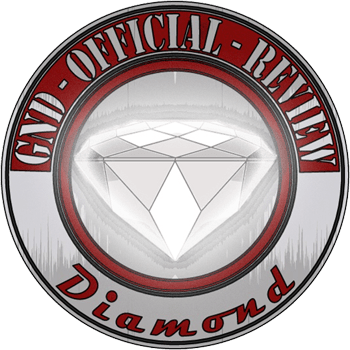


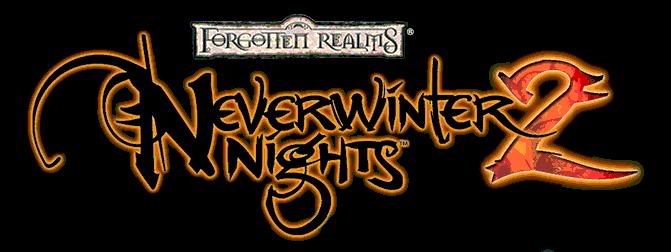
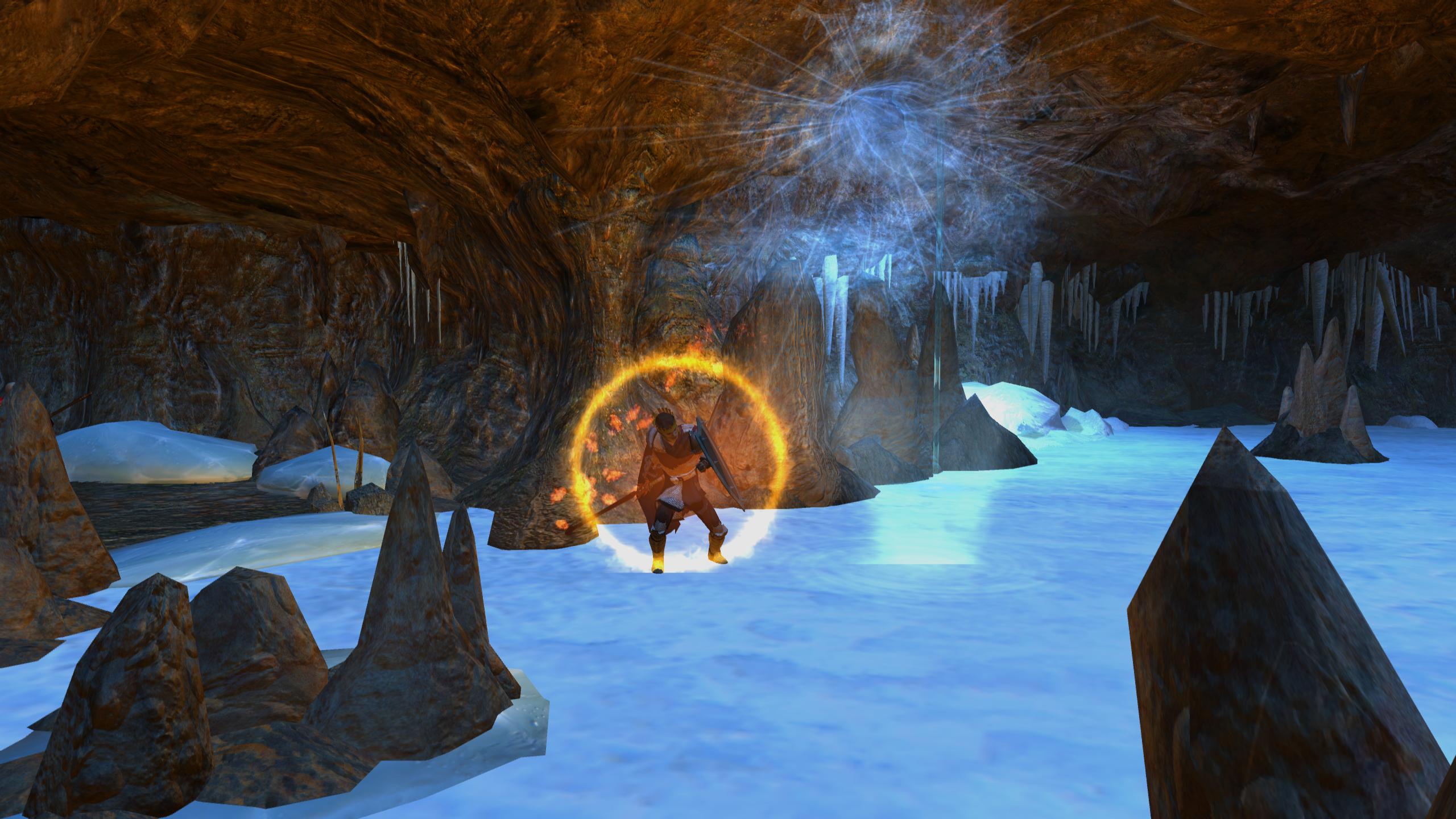

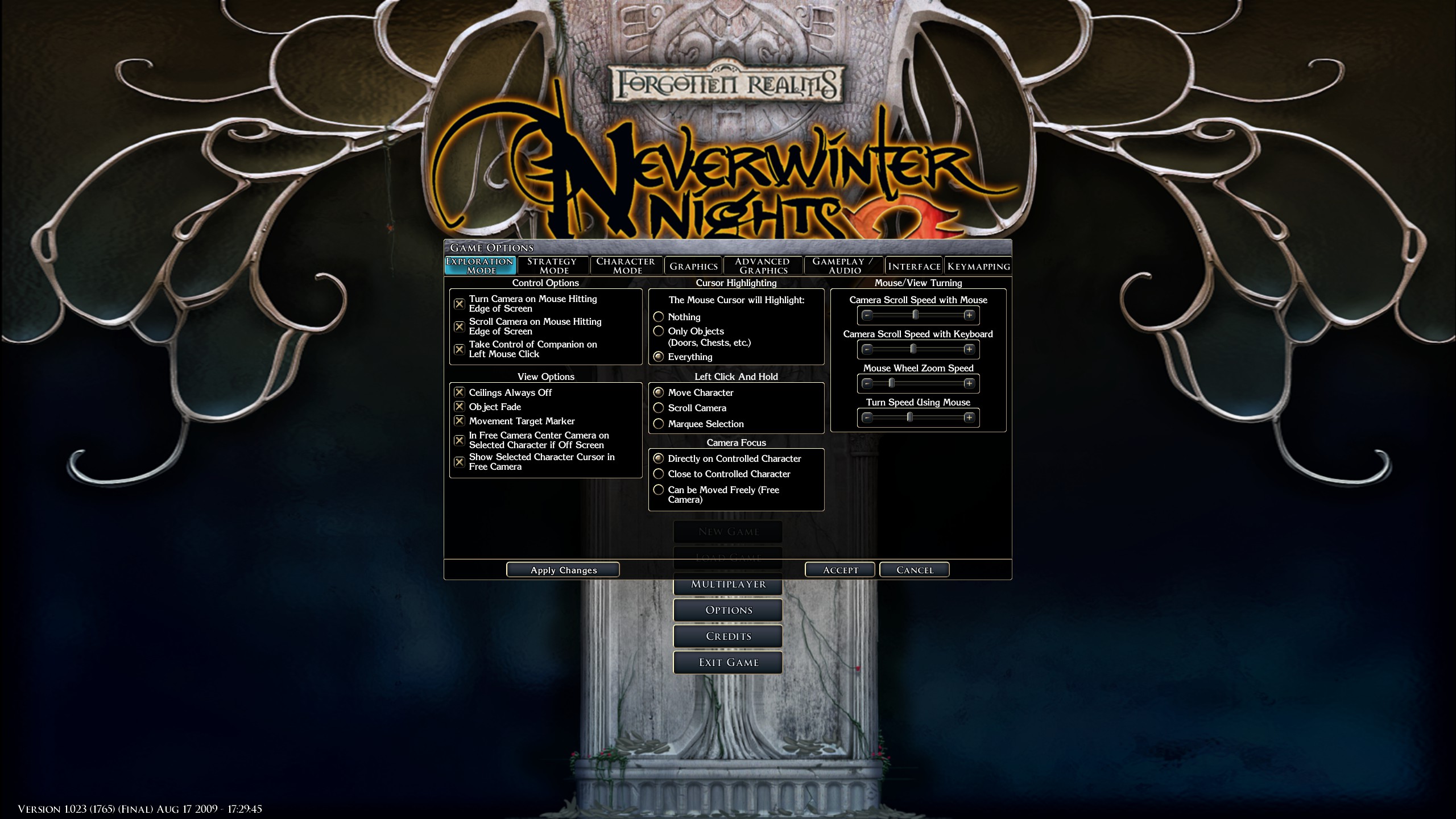
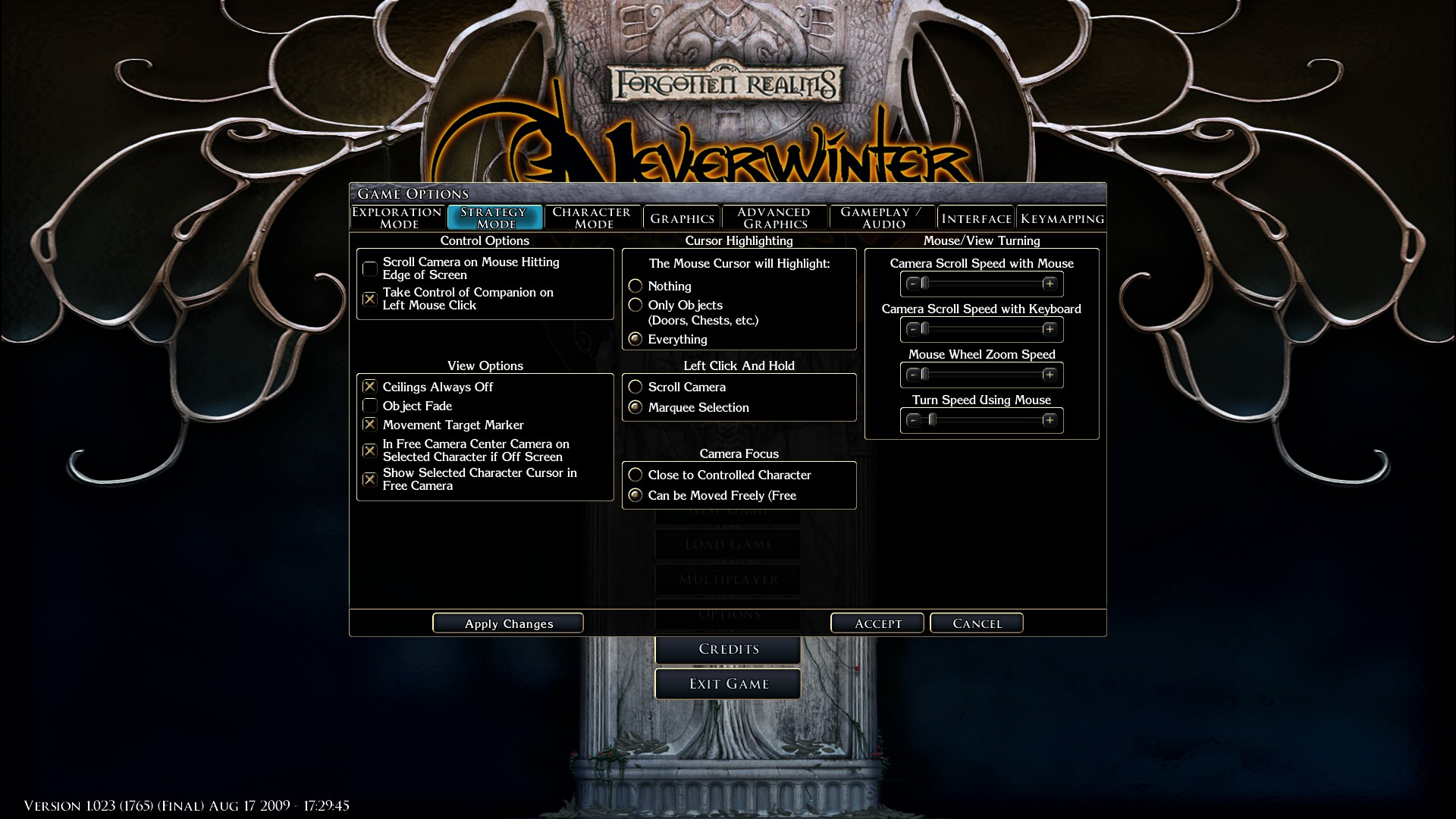
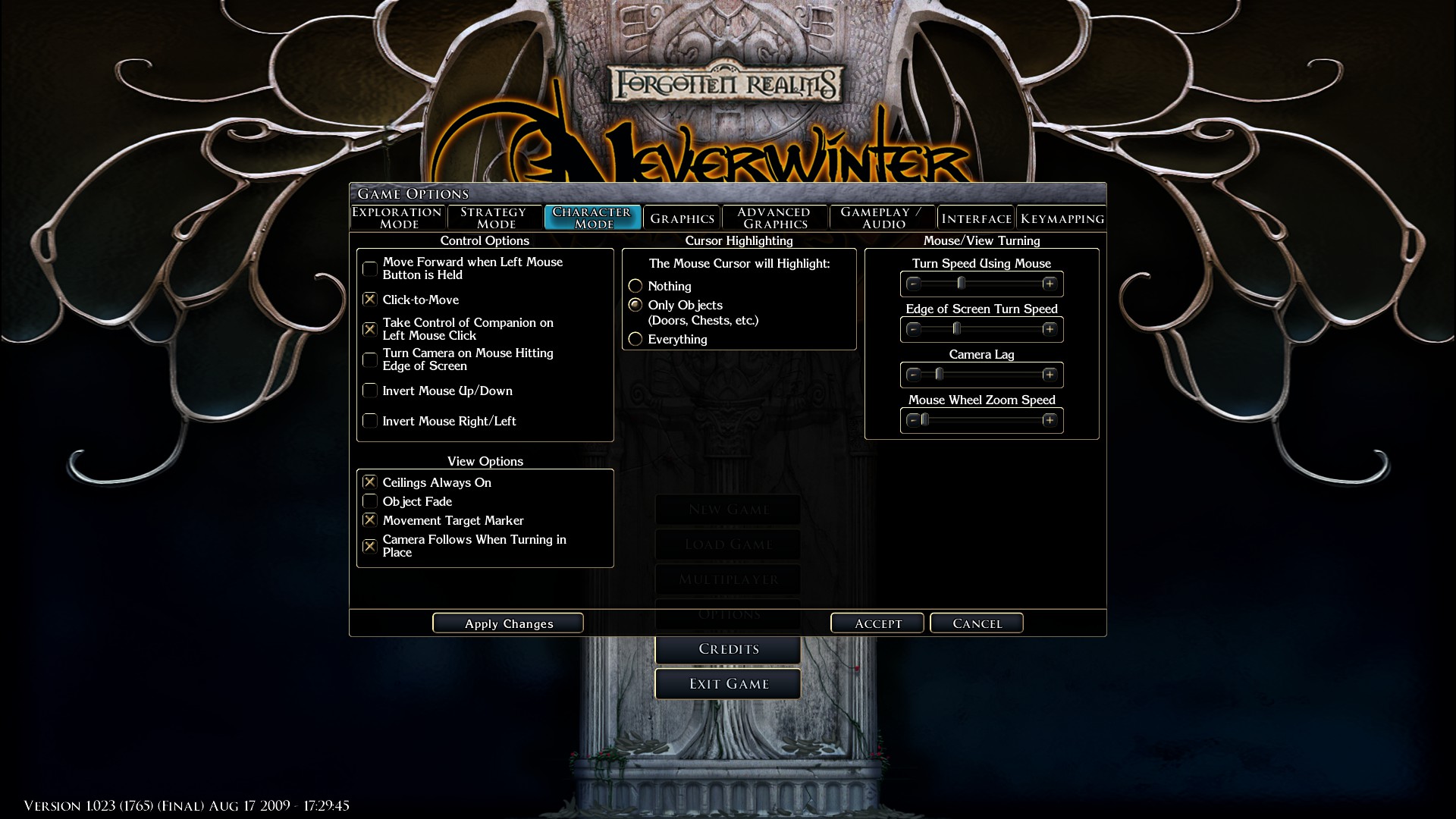
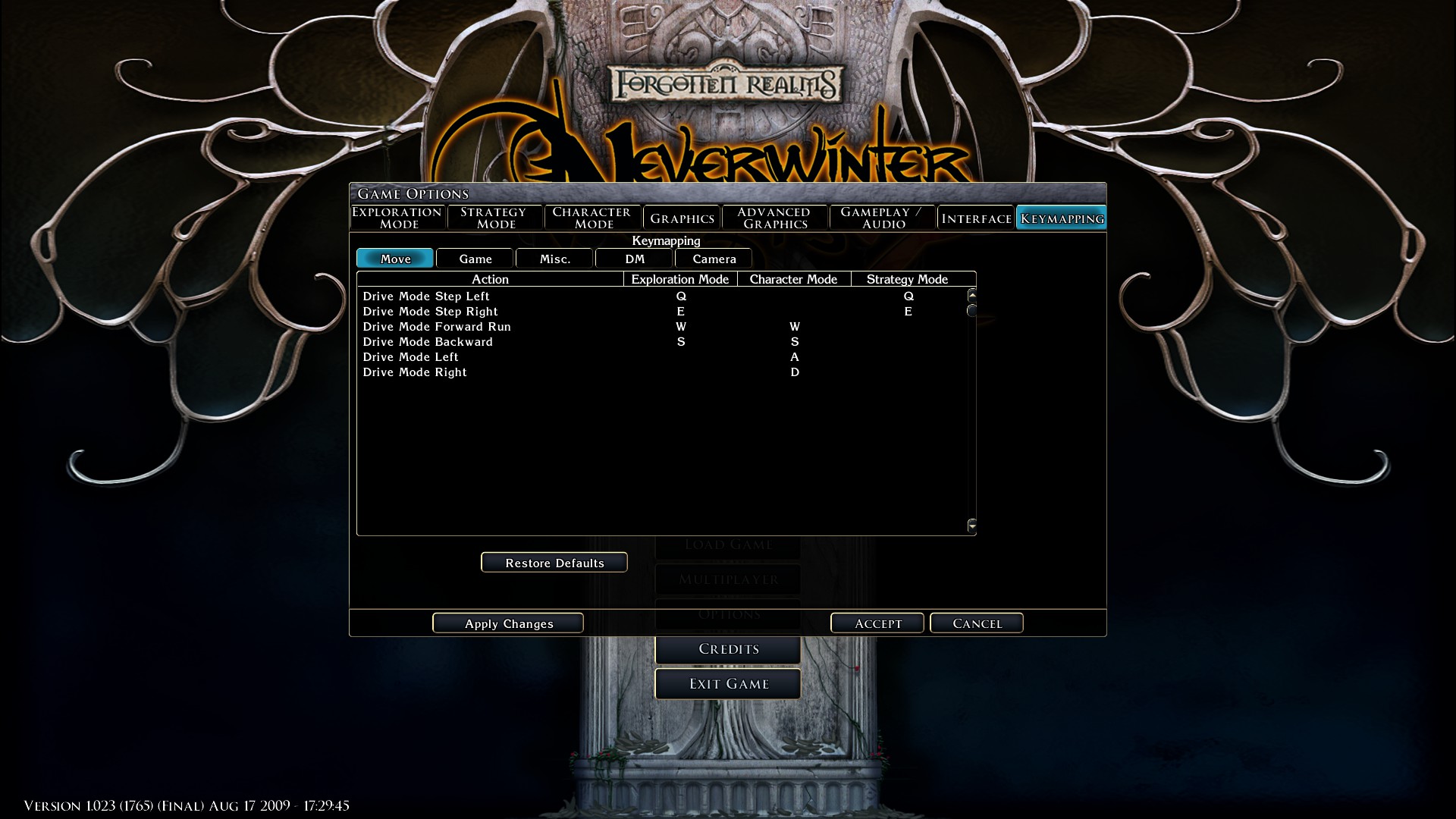



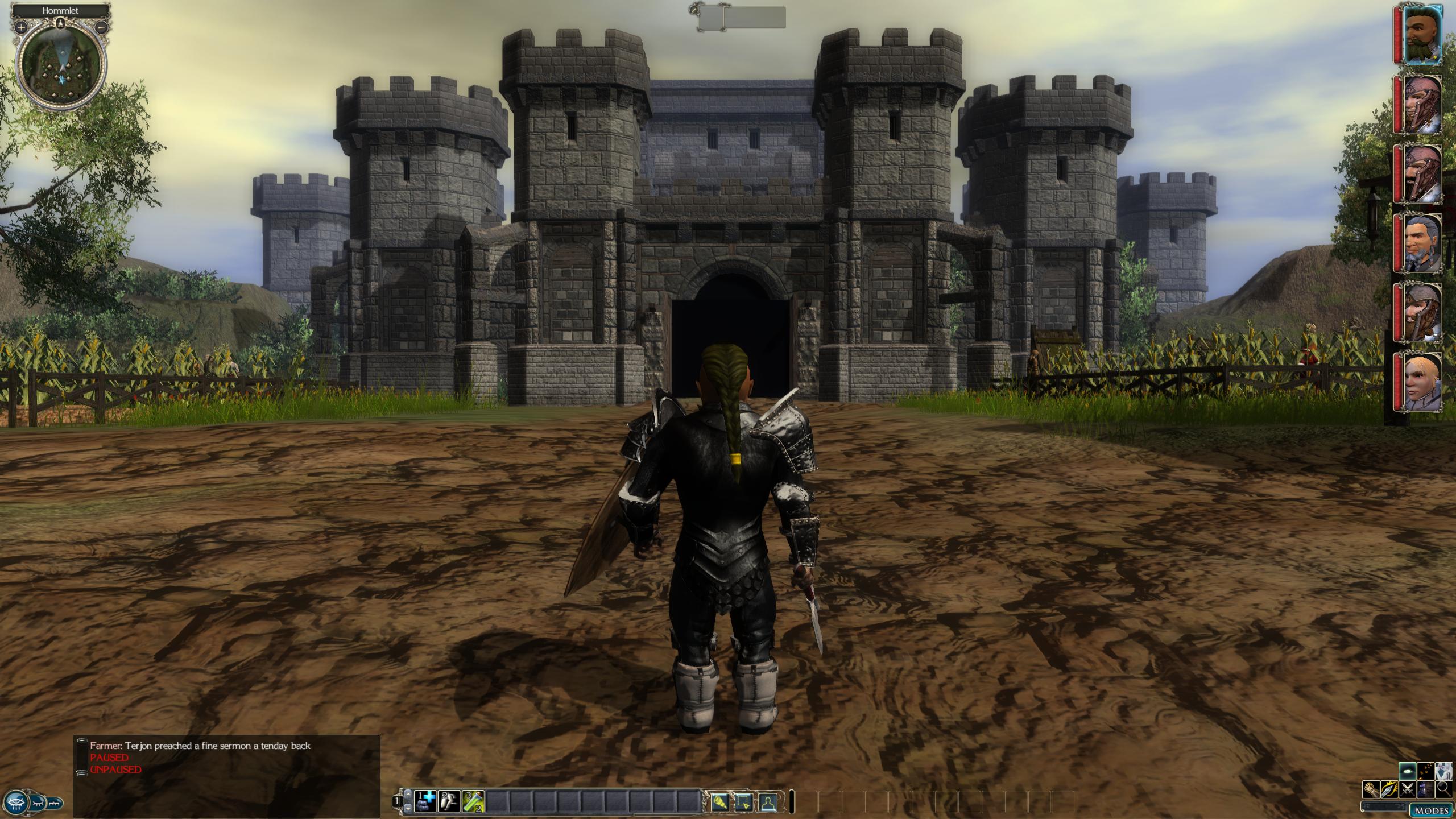
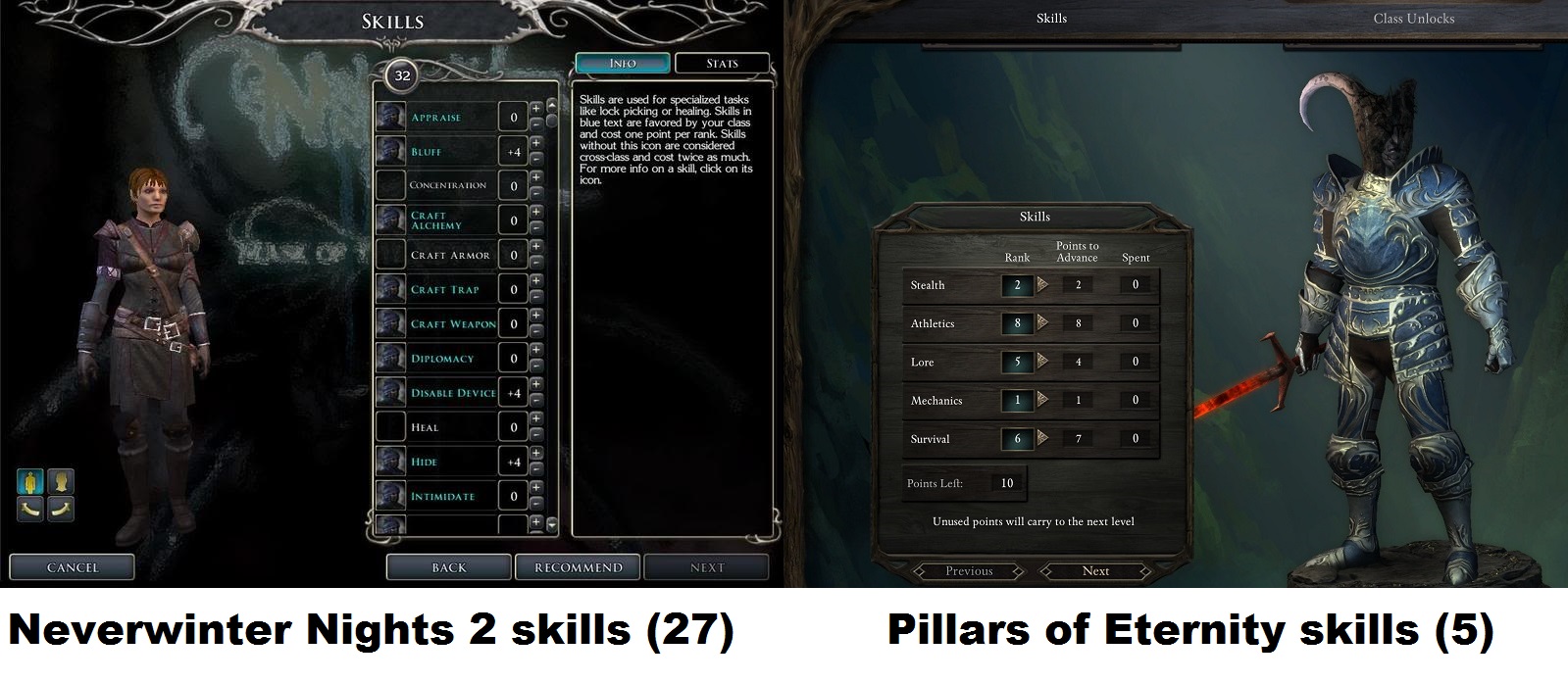
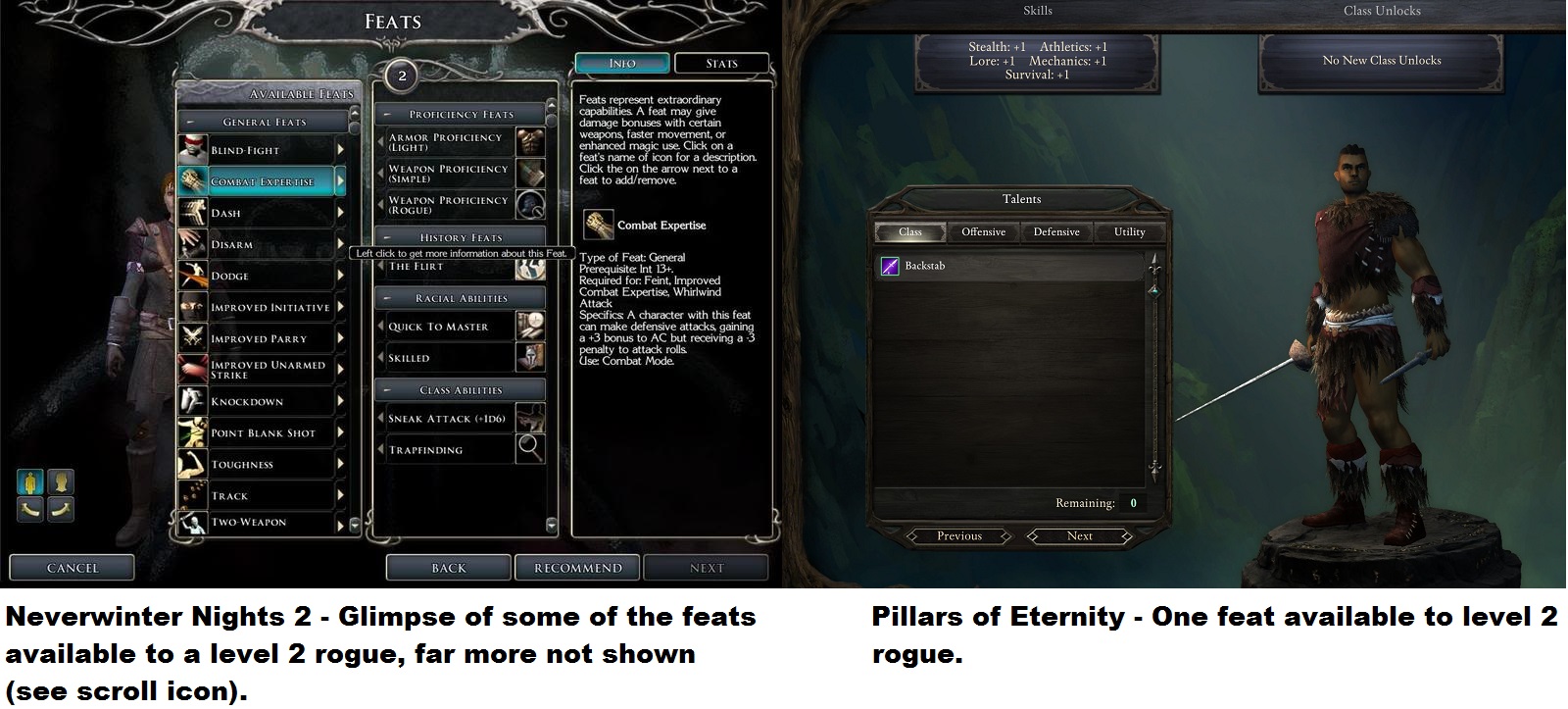
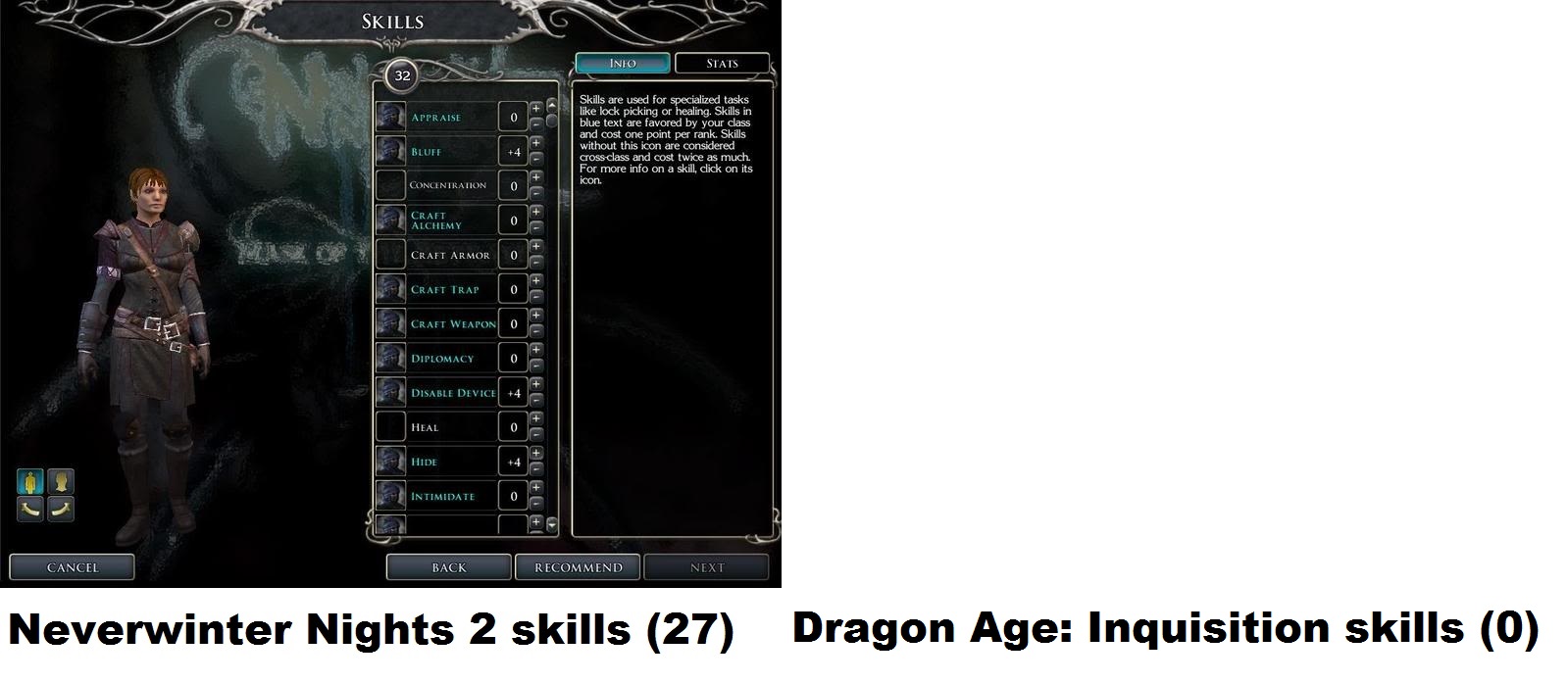

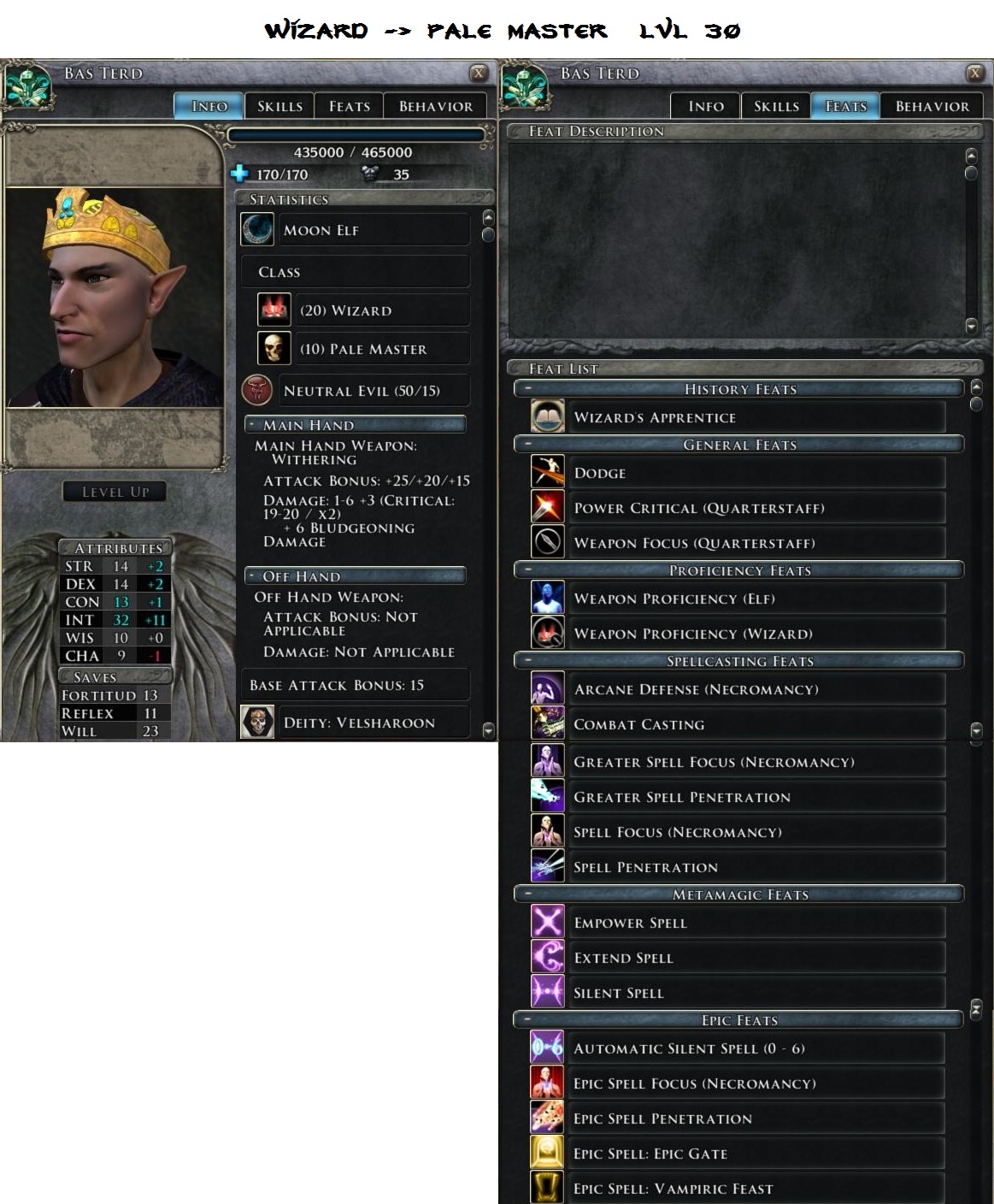
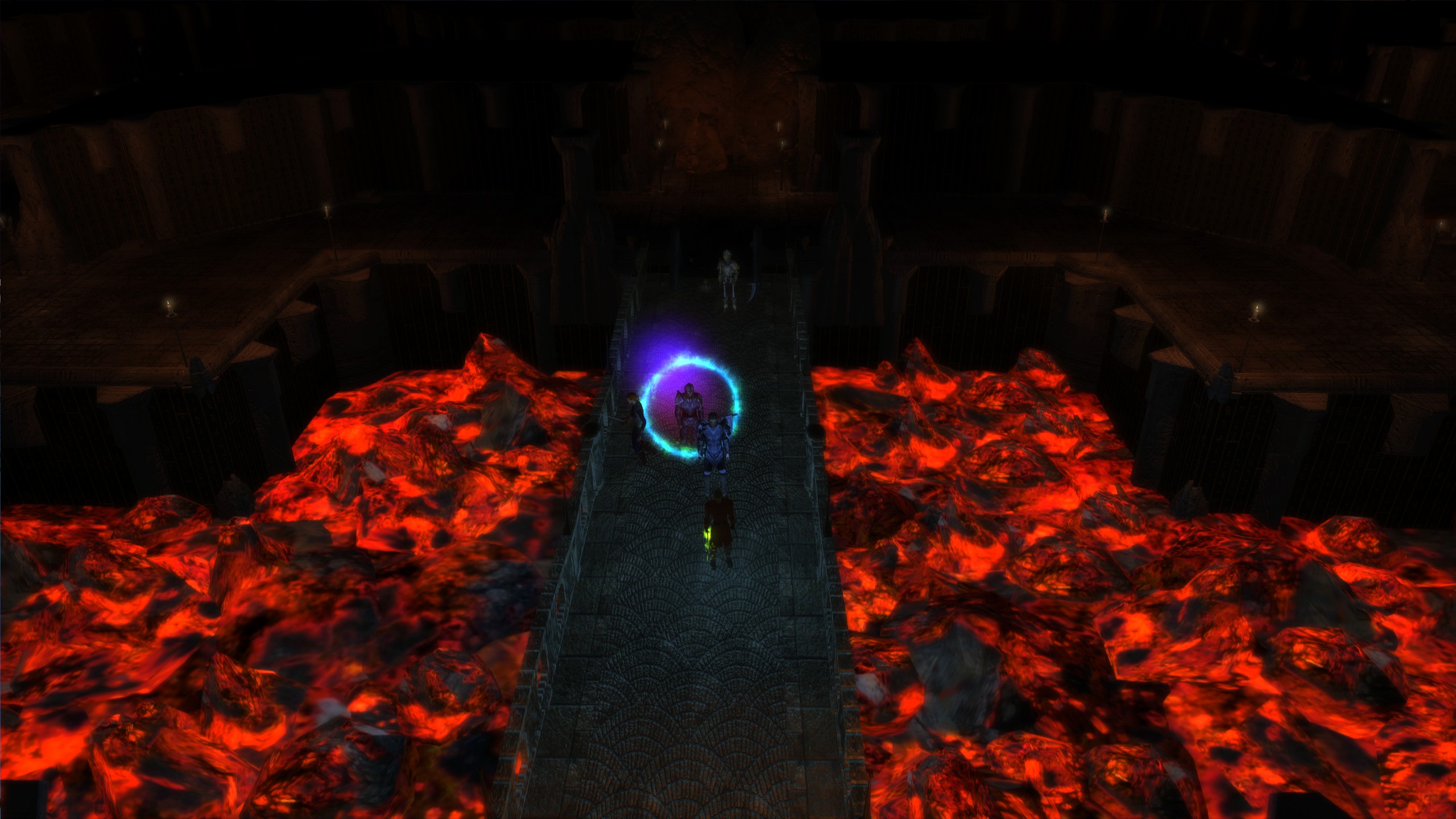
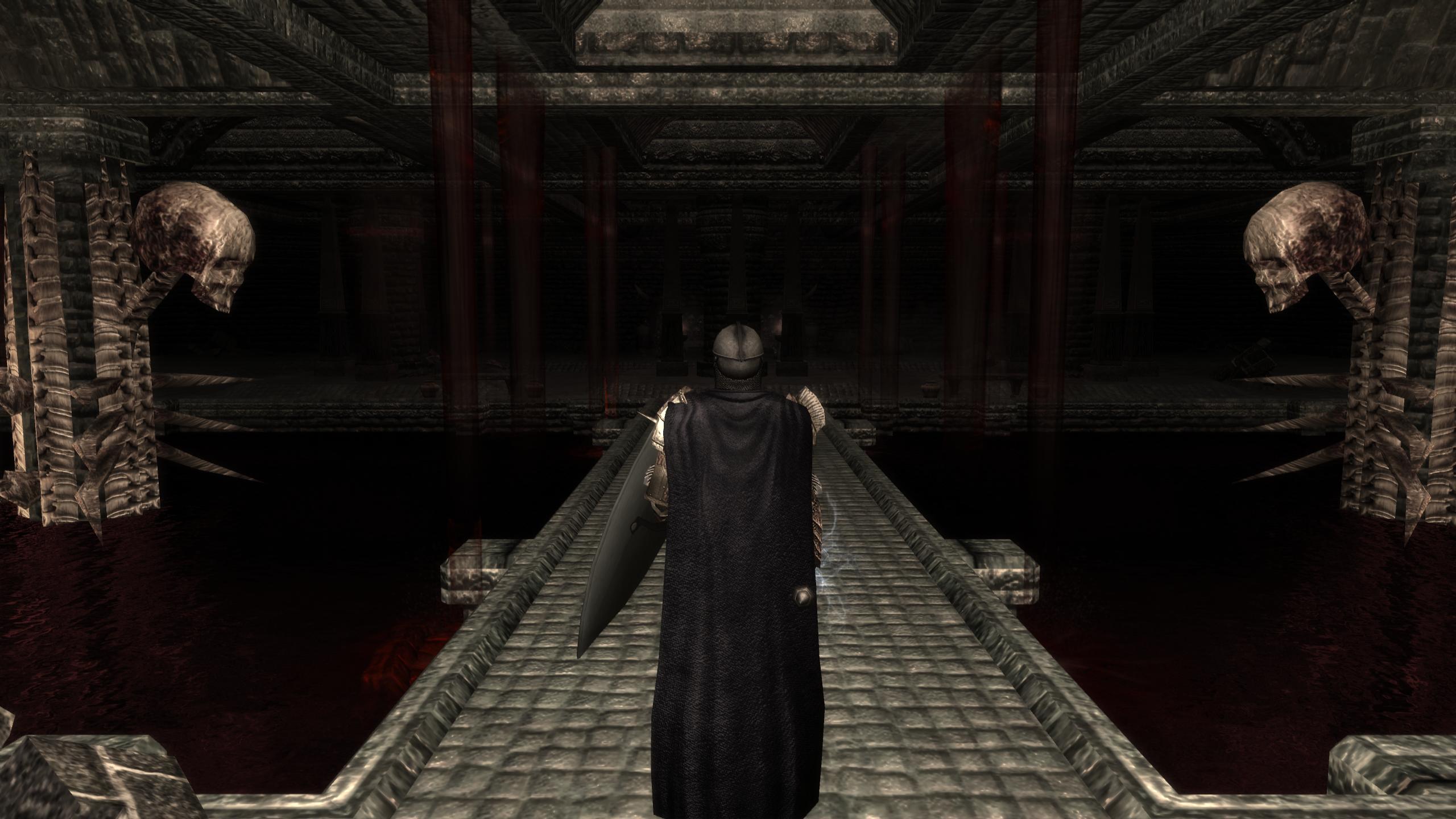







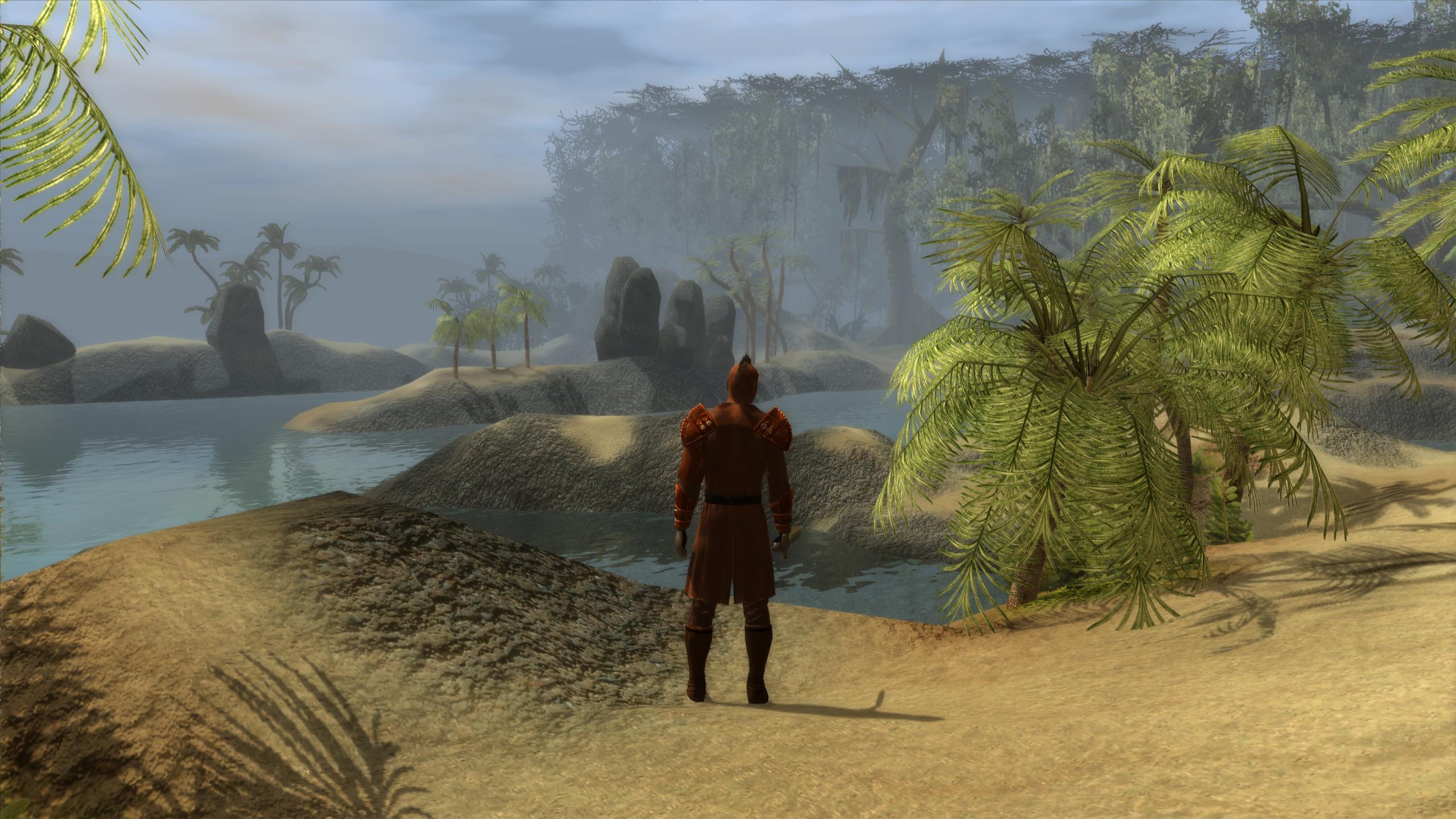






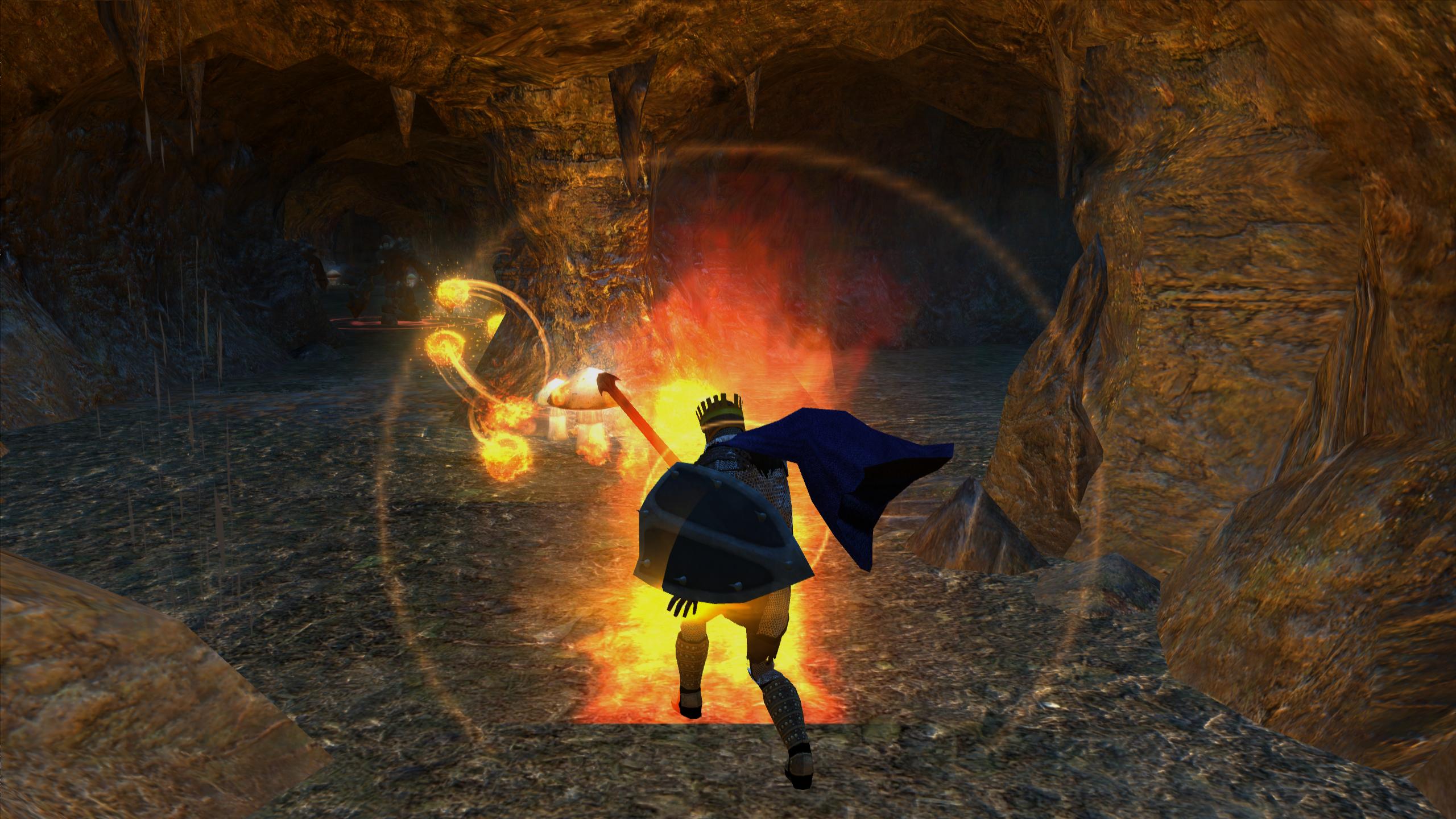



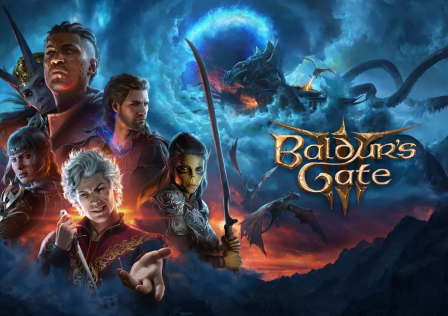
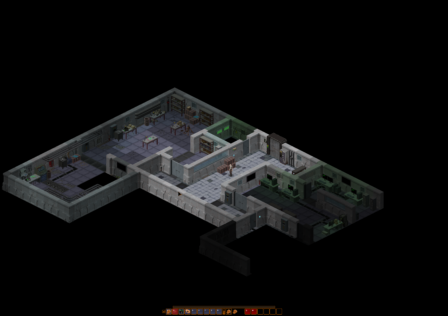
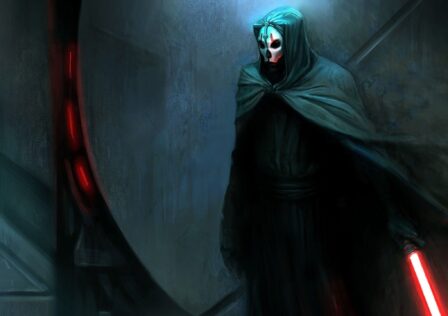
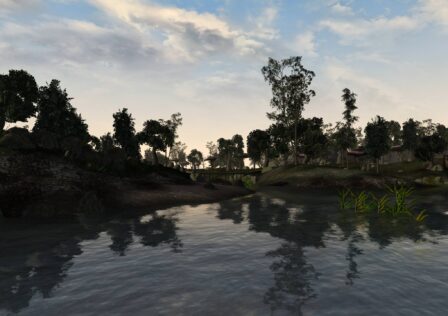
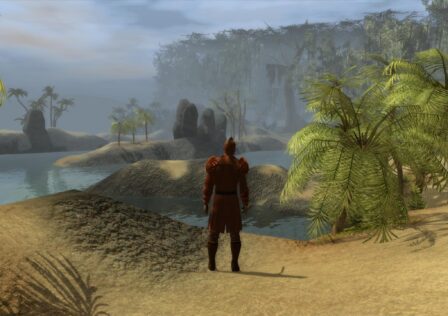

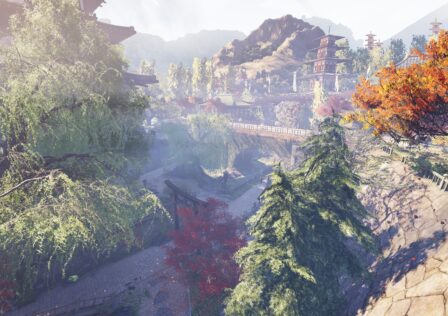
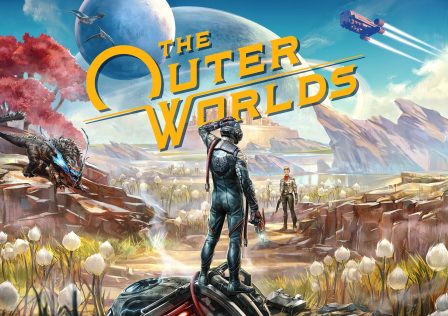

[…] AI. The same for most other non-strategy games with such statistically balanced difficulty, like Neverwinter Nights 2 on Hardcore D&D mode (although most won’t find this one easy due to the complexity of the […]
[…] than following the unique format of our Neverwinter Nights 2 article, we’ll stick to a more traditional one because Penumbra’s episodes directly […]